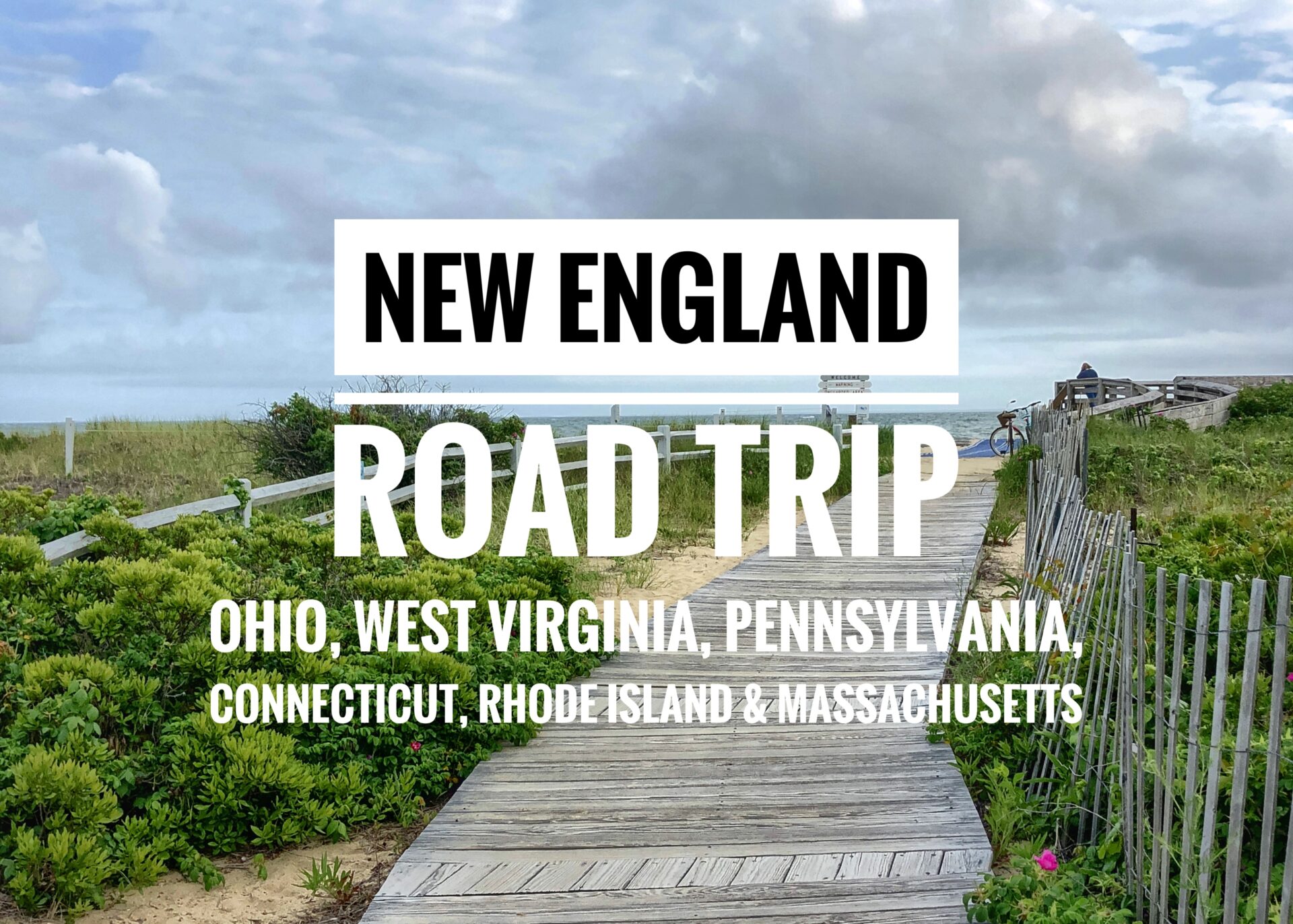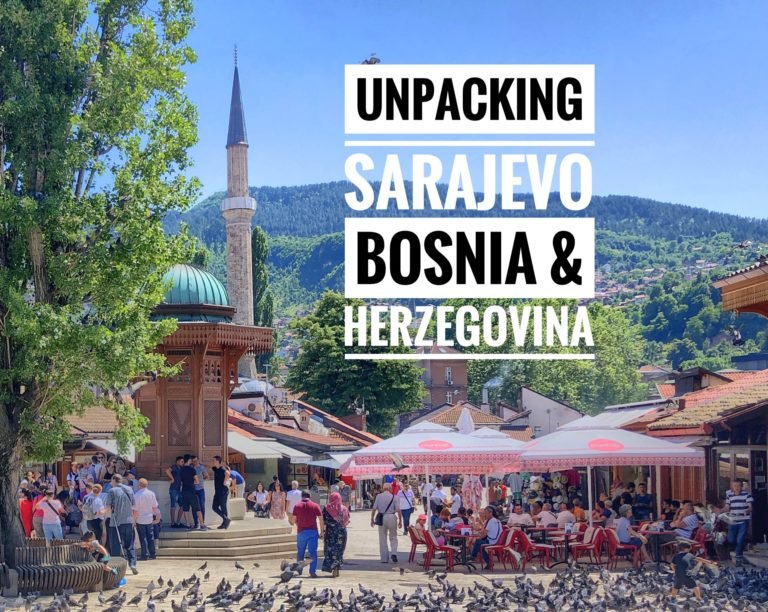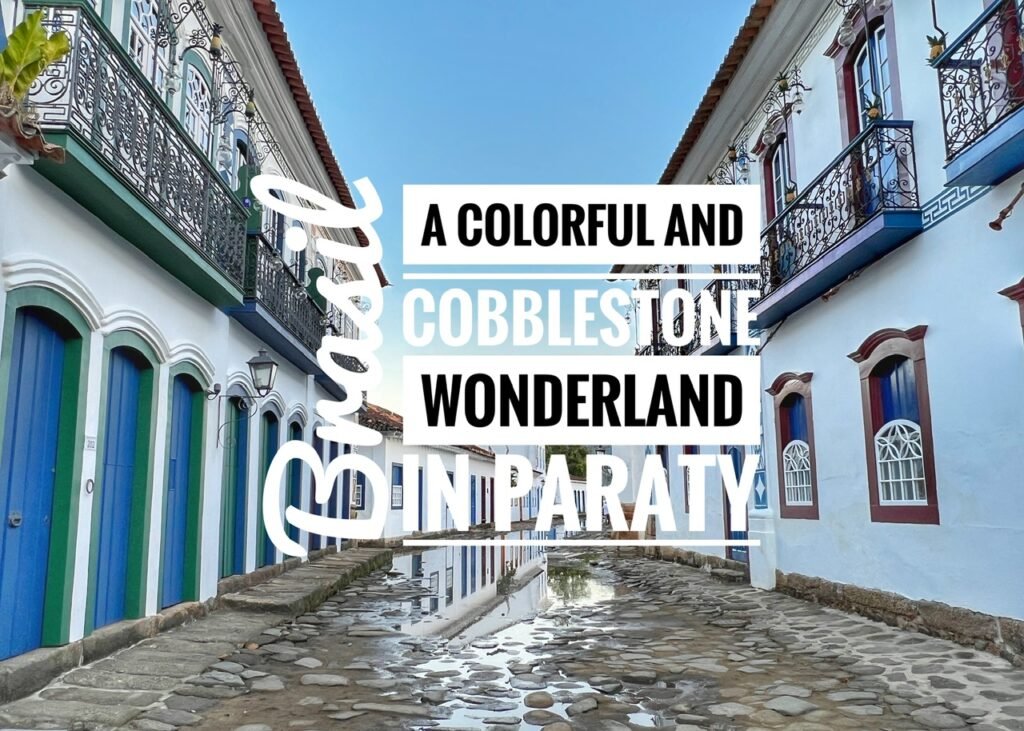
Getting There & Where we Stayed
From Ilha Grande, we took the local ferry ($5/each) to get to Angra Dos Reís, followed by a local bus to Paraty further west of Rio de Janiero. Paraty is one of those places typically known as “a colonial gem” by local and international tourists alike. Because of this, it was also a bit pricey for us, so we decided to use a Hopper credit we had to book two free nights camping. Since we don’t carry a tent with us, we were excited to find they had a few options to do this without.
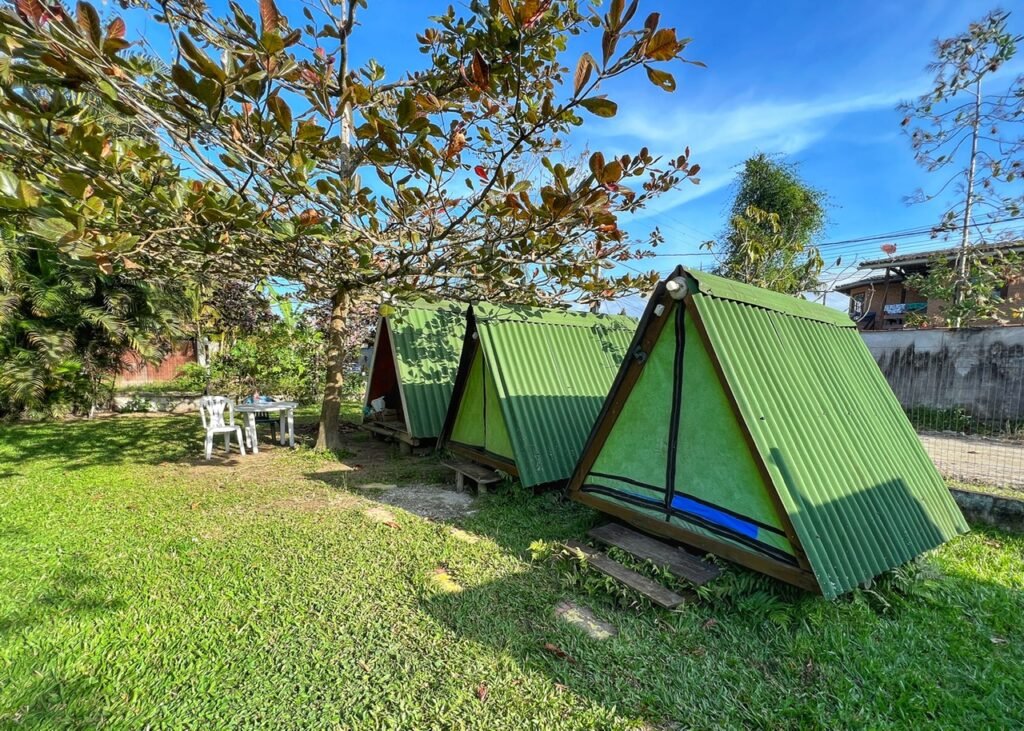
Through Hopper* we chose “Camping Marymar” and were given a “Chalet” in return for our $50 credit. Where we come from, the word “chalet” has cozy, wintry, ski connotations.
*By the way, Hopper has accommodations of all types! Have you signed up? Get $25 off your first booking when you do!! We save so much money on it!
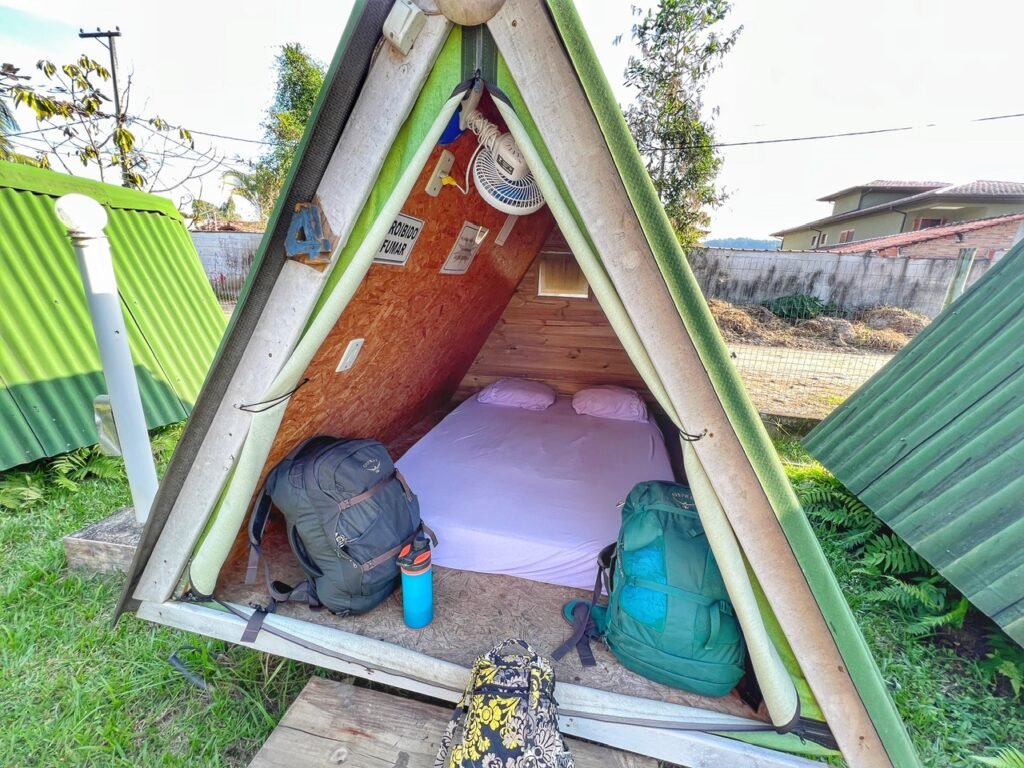
It wasn’t a bad place to sleep, but “Plywood A-frame Box” would perhaps been a more accurate description. It reminded Mandy a lot of the above ground “hideout” she and her friend made and slept in as kids. It did have a fan (which wasn’t needed) as well as an internal light.

It also offered a shared kitchen, which looked like it belonged in an optical illusion book, and bathroom.

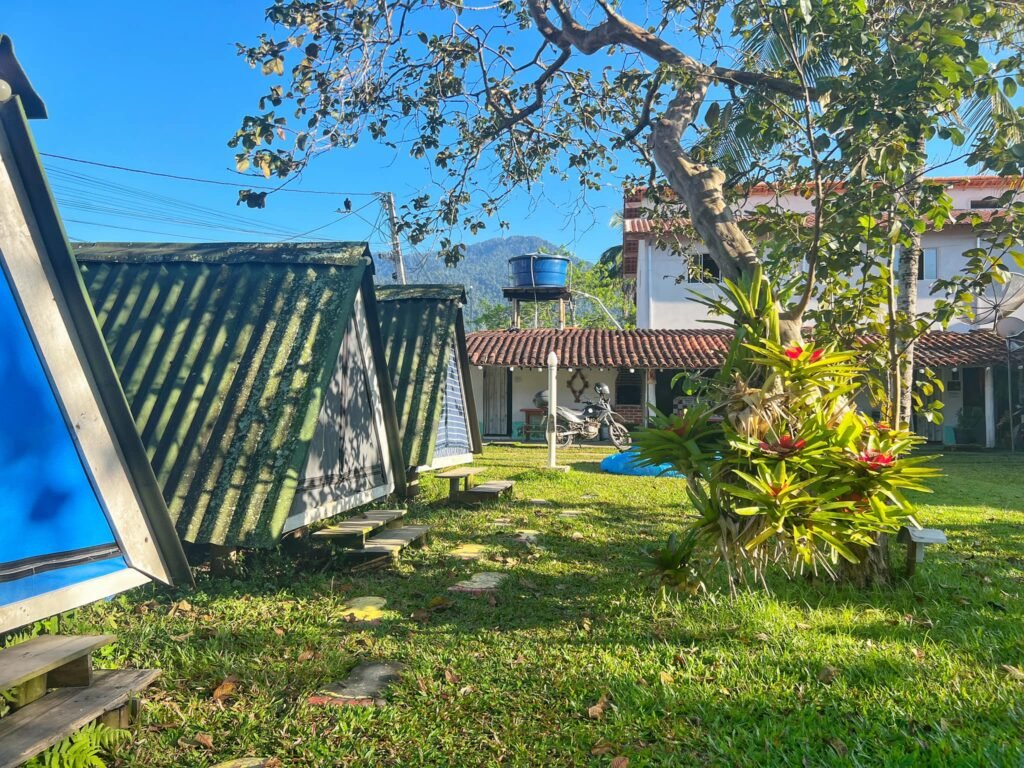
Greg enjoyed his coffee in the early morning sun. We didn’t have any neighbors, other than a very obnoxious canine at 3 am, and some marmosets that frolicked in the nearby trees. It’s so trippy to have monkeys cavorting about like squirrels do. It’s also hilarious to watch dog ogling after them in the same way.
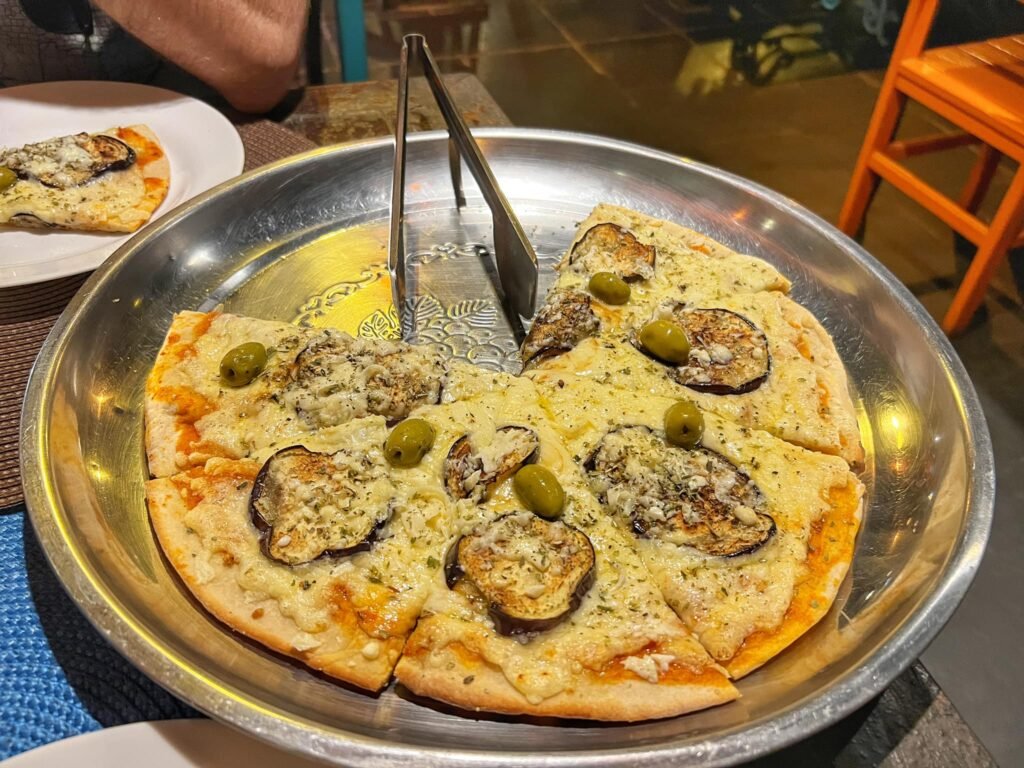
That night…pizza…saving the budget once again. Eggplant parmesean pizza and beer. $16. Yum 😋
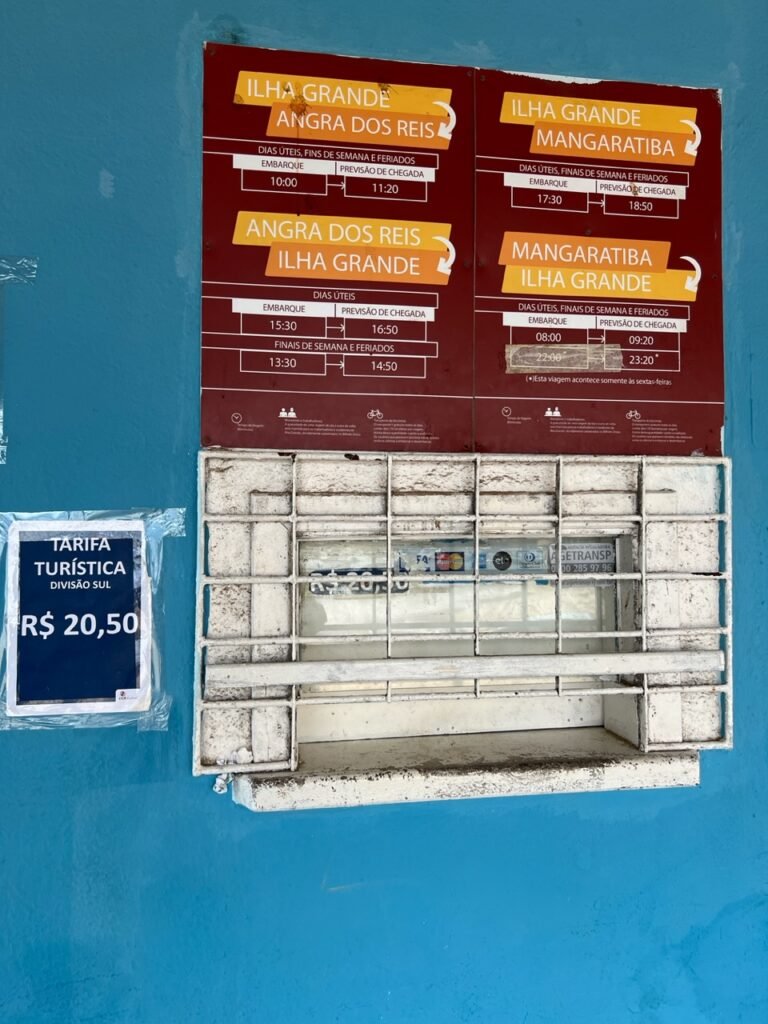
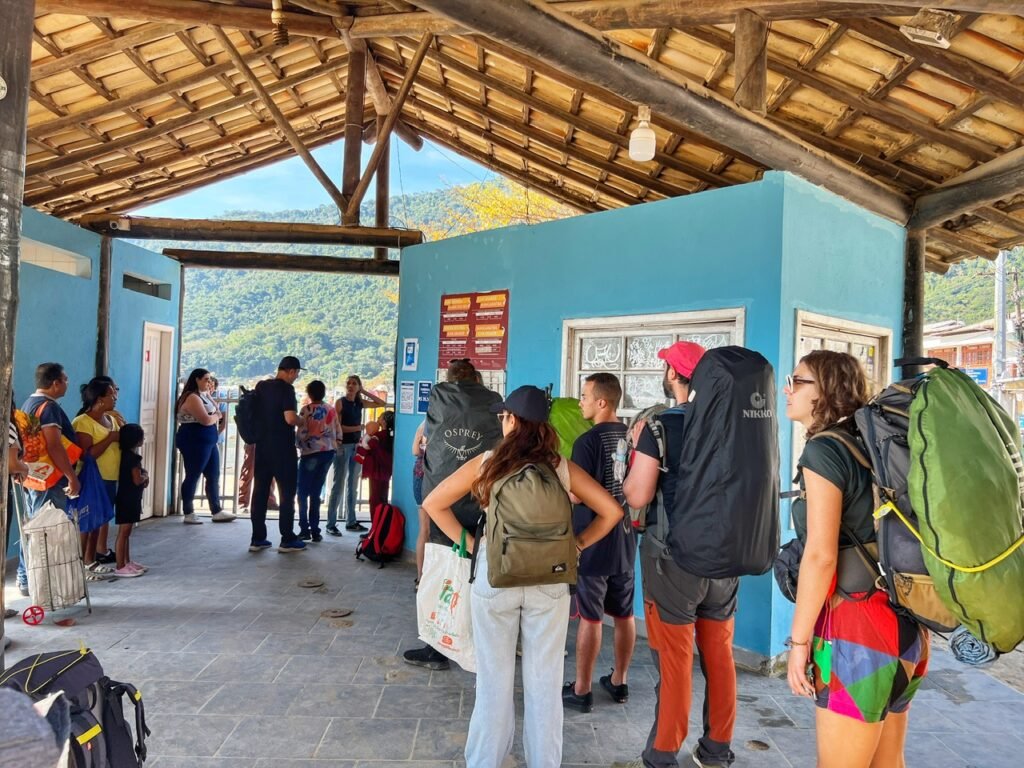
And…ah yes, for those that are interested: how we arrived to Paraty from Ilha Grande. The cheap local ferry from Ilha Grande ($5) leaves only one time per day…10 am. Make sure to arrive about a half hour early to secure your tickets.

Arriving to the shimmering town of Angra dos Reís, which translates to Cove of the Kings.
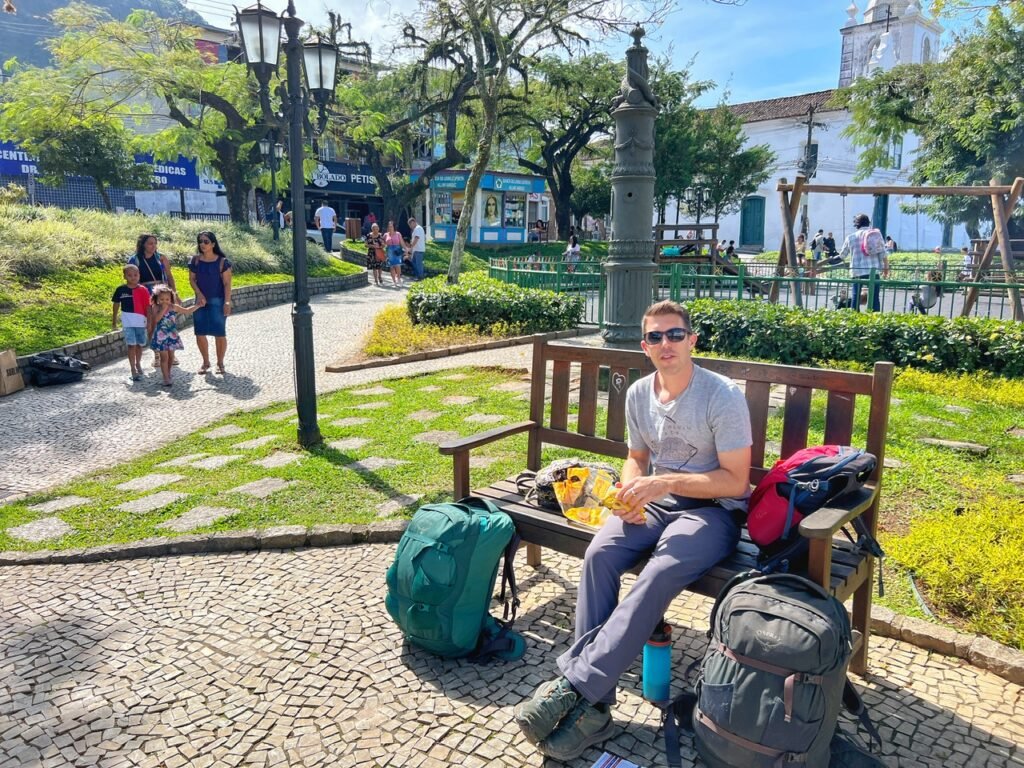

Here we grabbed a bench in the park to eat our pre-packed lunches, before heading to the nearby local bus stop conveniently marked as “Colitur bus station to Paraty” on Google Maps.
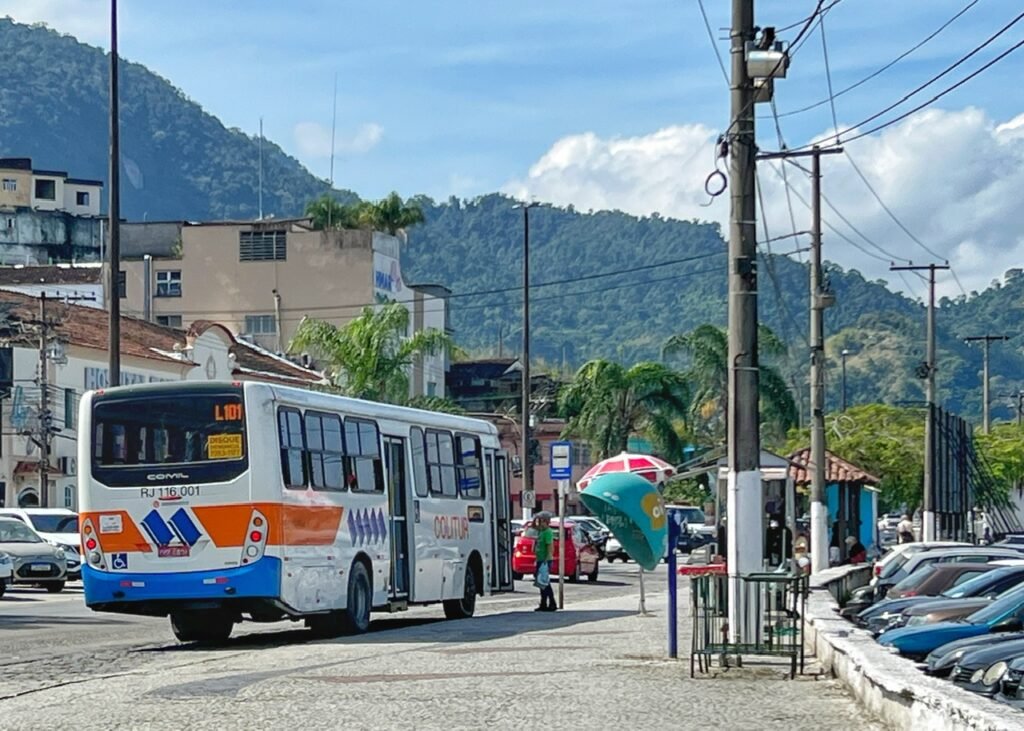
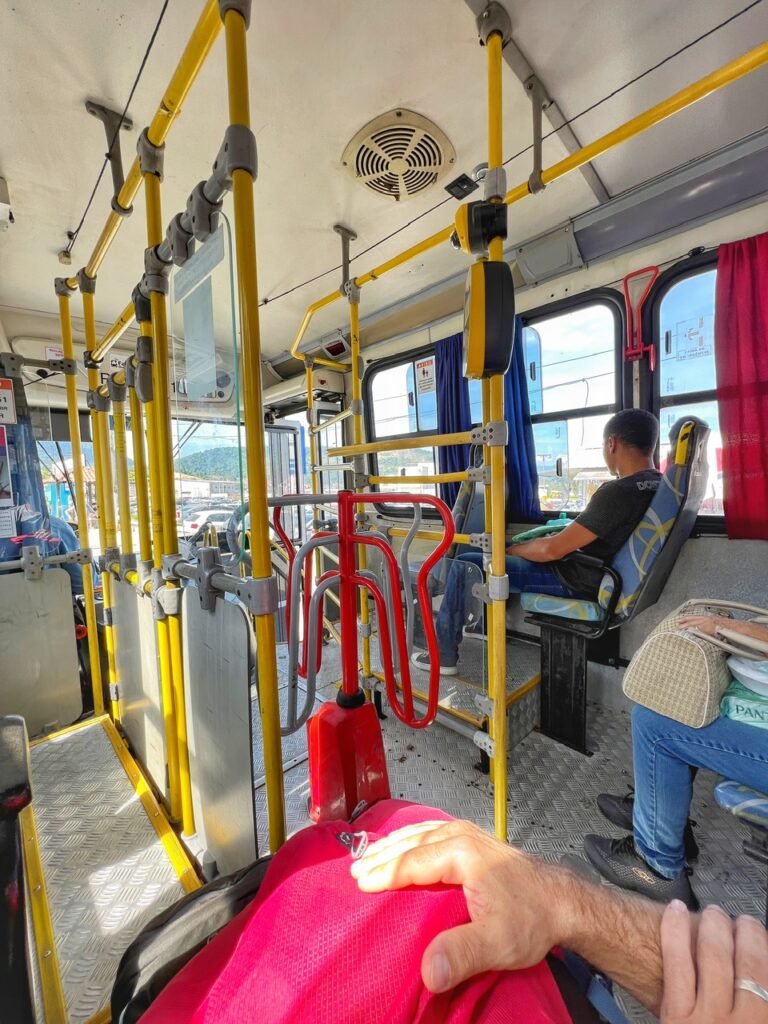
The bus, marked “L101” left at 12:40 pm which lined up almost perfectly with the arrival of the ferry. It cost 44 Reais, or about $4.50 each for the 1.5 hour ride. By the way, Brazilian local buses are a bit strange and have a tiny turnstiles in the front where you pay for your ticket. It’s always fun to squeeze through awkward turnstiles on Brazilian buses with bags on. We get stuck almost every time undoubtedly creating laughable entertainment for the locals. 🤣
The Cute Side of Paraty
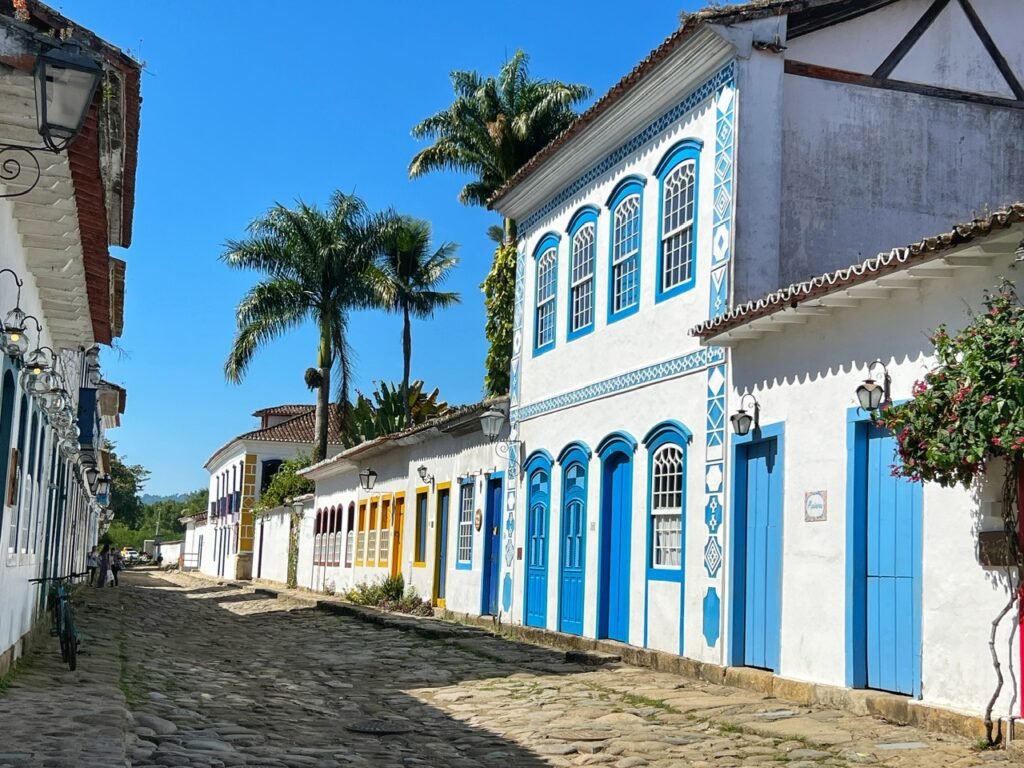
If a time-warped charm land like this were dropped in Europe this time of year (August), it would be gushing with tourists, unbearable heat and ways to burn your wallet. But in Brazil’s winter, you can find an exquisitely preserved Portuguese colonial jewel with a fraction of the crowds and cost, divine sunny and spring-like weather, and a legit wow-factor at every turn.
The Caribbean meets Portuguese cobbled streets of Paraty are simply teeming with beguiling cuteness. In fact, while wandering its rather extensive historic center, we continually struggled to find synonyms for “cute” and “adorable.”
Welcome to Paraty, founded in 1597, sometimes known as the “Venice of Brazil” due to its monthly flooded streets, four hours west of Rio de Janiero. It is a well-deserved UNESCO World Heritage site, reflected in its unique culture, architecture and natural biodiversity.
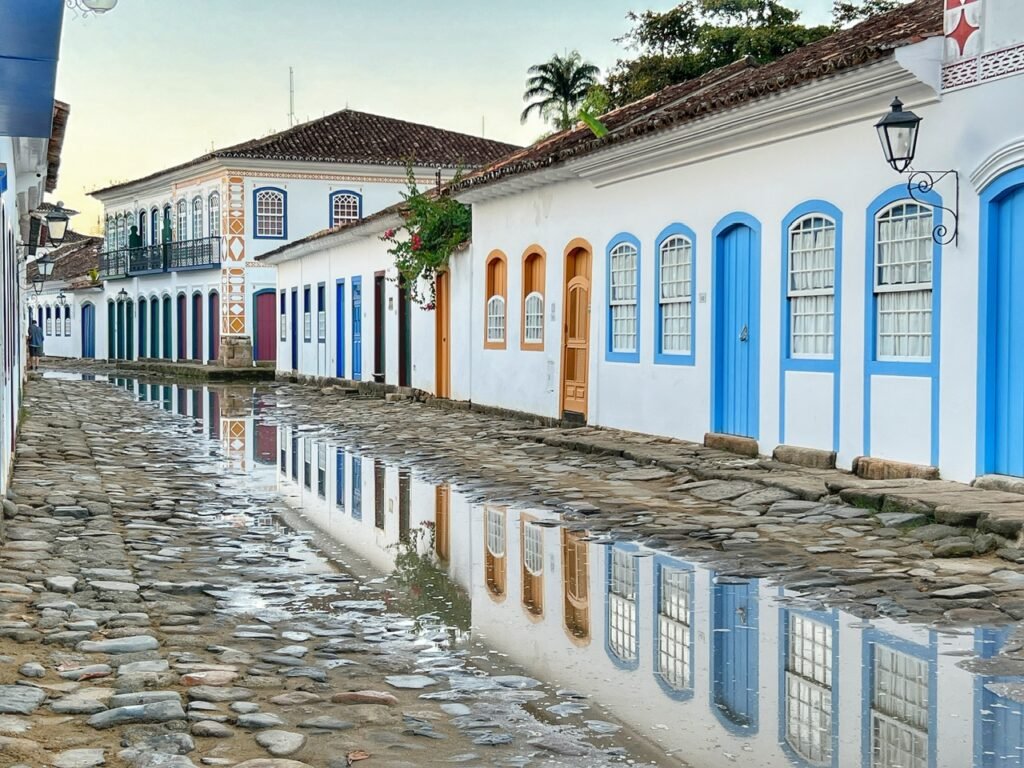
And then you enter the reflective upside down of cuteness to make it even more challenging. Keep reading for why the streets were flooded…

Complete with no vehicles allowed, (unless you’re a horse.)

Paraty felt like a blend of many places we’d laid eyes on before, like Guatape (Colombia—or many villages in that country), Trinidad (Cuba) and Bernal (Mexico), but undoubtedly with its own identity and appeal.
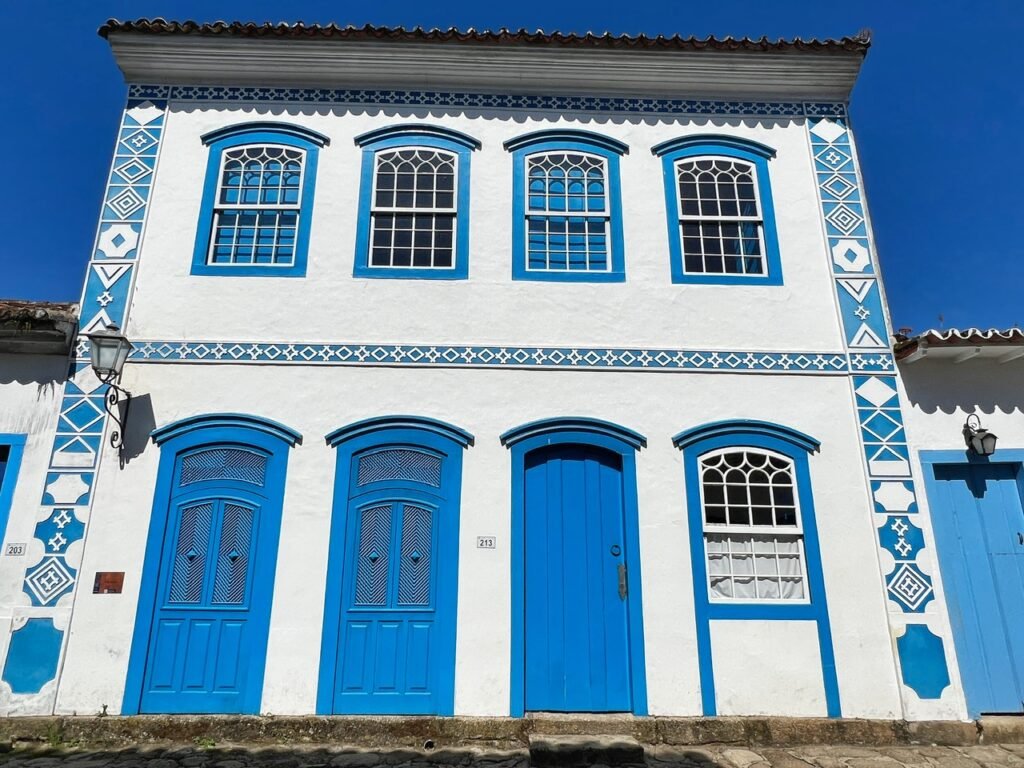

Paraty was originally built by Freemasons escaping persecution in Europe when Brazil was under Portuguese rule. While the group had to exist discreetly in the Old World, in Brazil they were free to paint the town with overt Masonic language and signs.
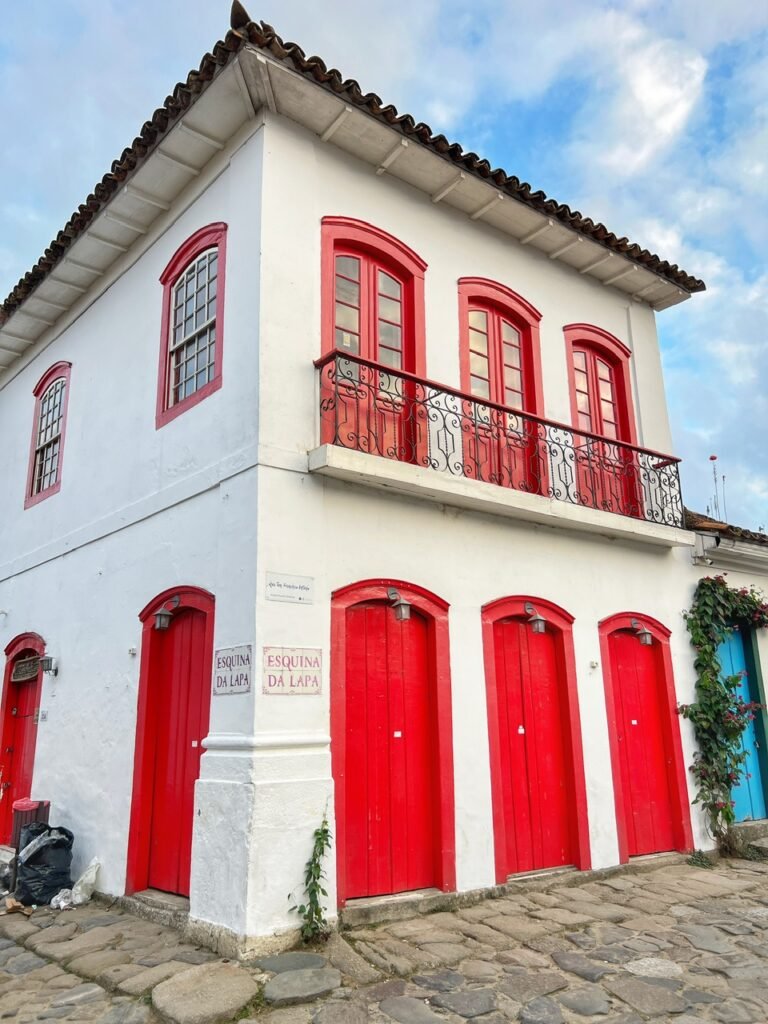
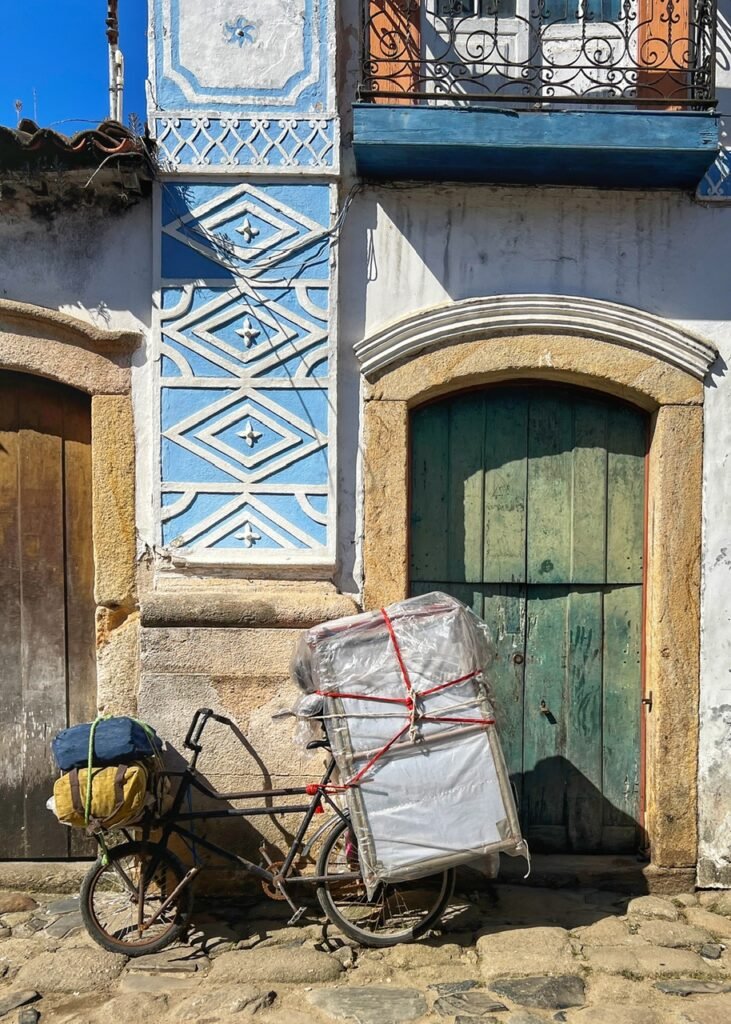
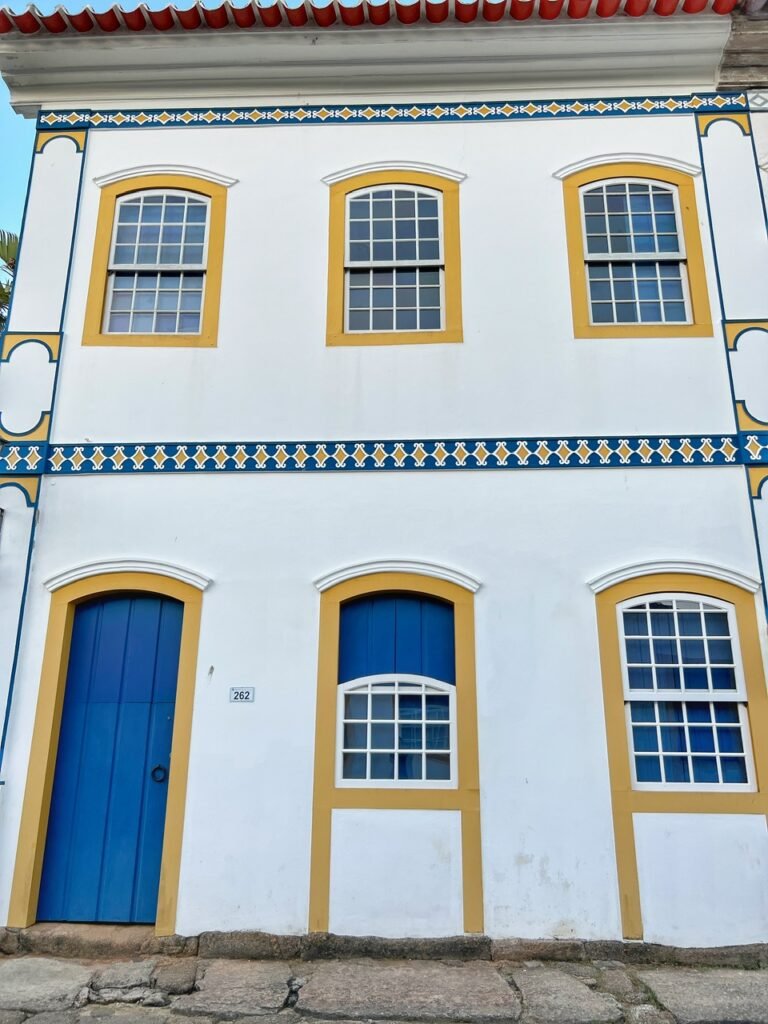
Thus, it is bursting with colorful colonial Masonic architecture and symbolic imagery all around the historic center.
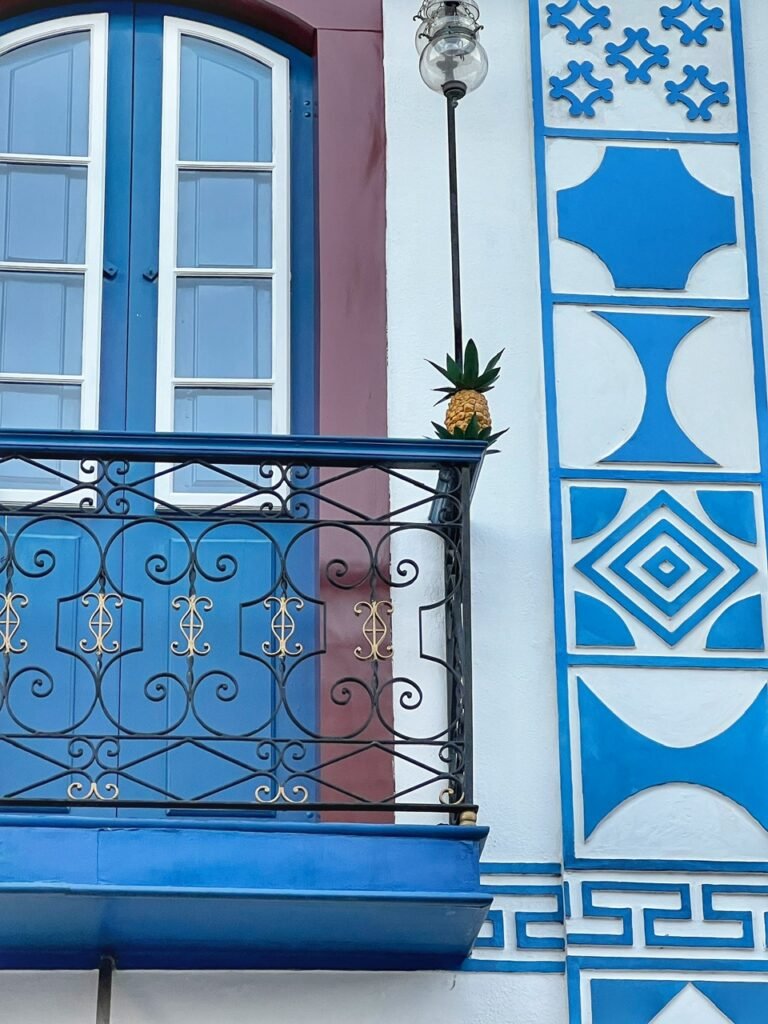

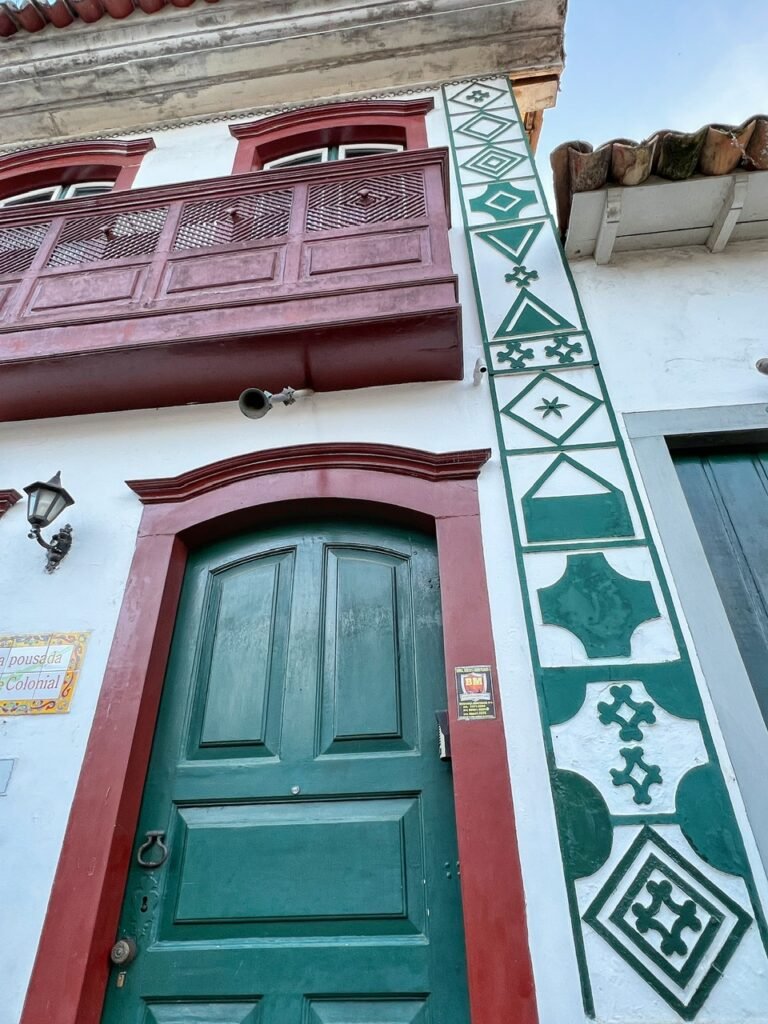
There are iconic geometric ciphers, vertical bands of Freemasons’ geometric panels, and street corners with three pillars in stone and one in whitewash (symbolizing a triangle standing for liberty, equality, and fraternity). Many of the buildings are also painted blue and white, the ancient Masonic colors. (Source: Atlas Obscura)

The picturesque port to the city is fringed by mountains and sea.
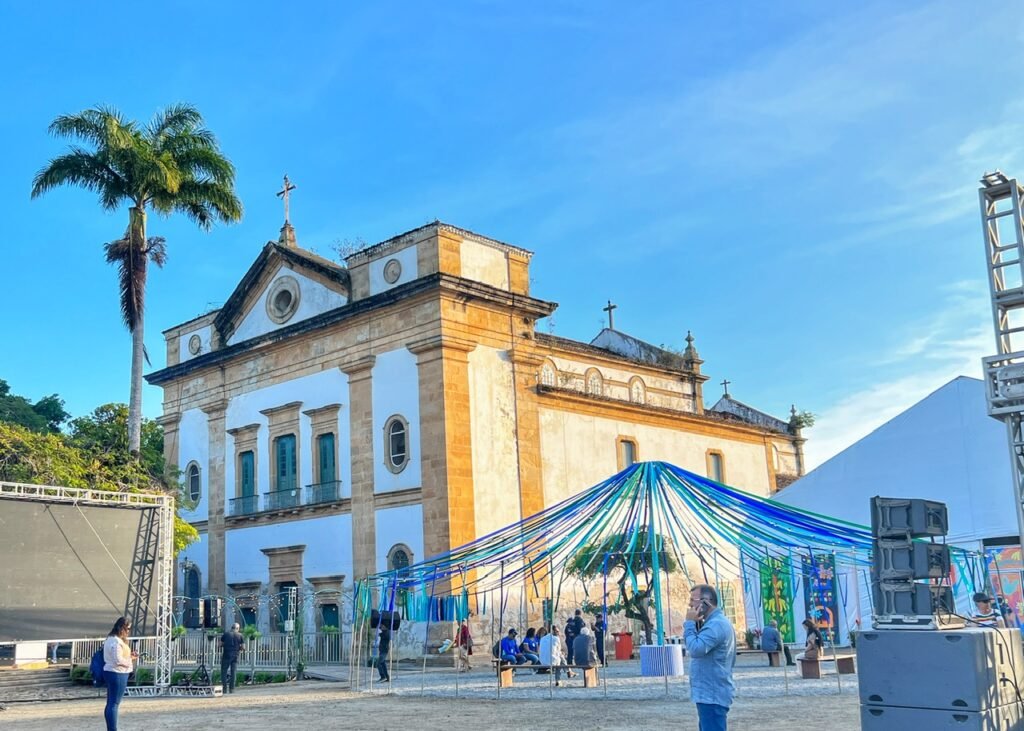
The main square was being set up for an indigenous festival.
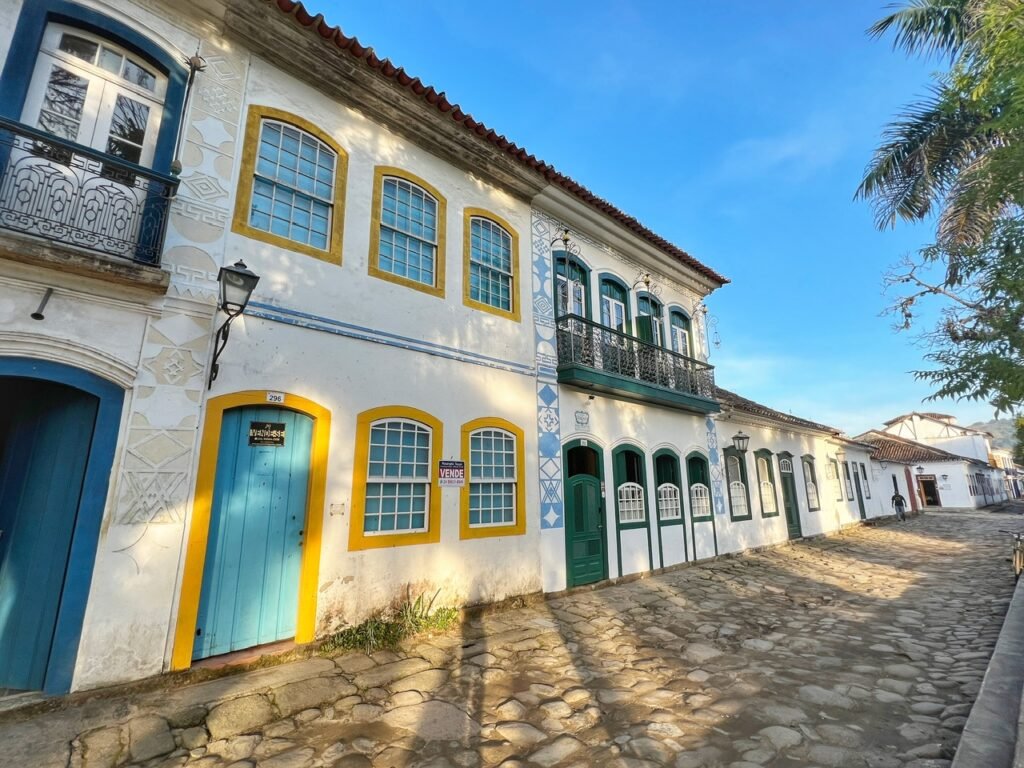
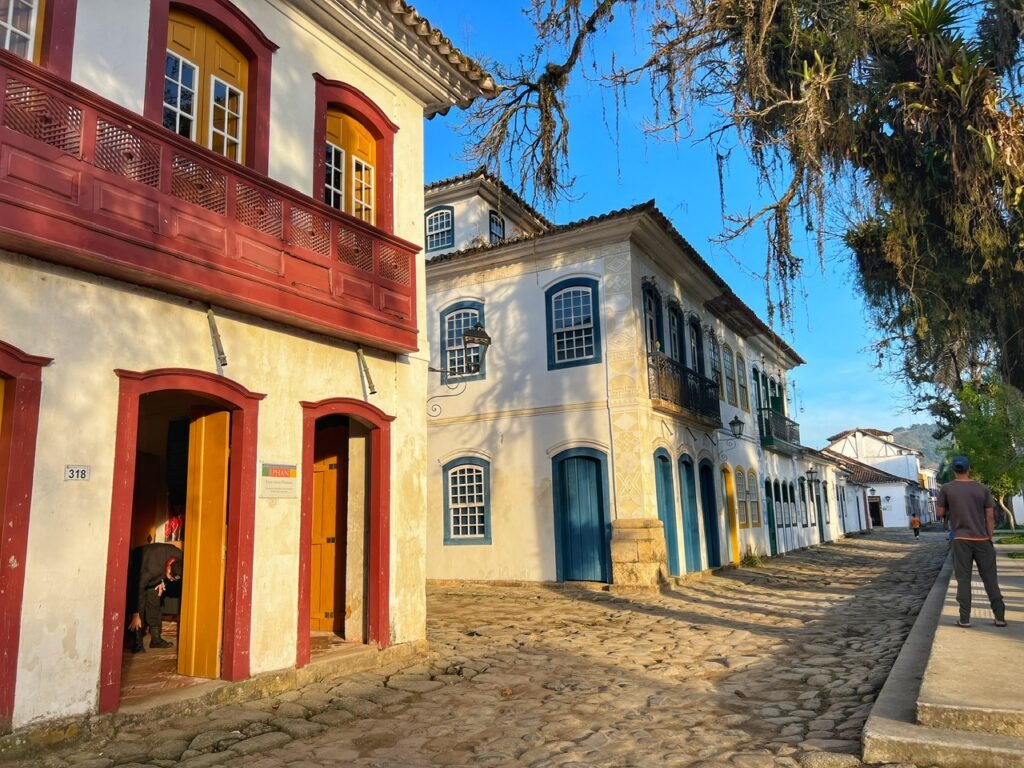
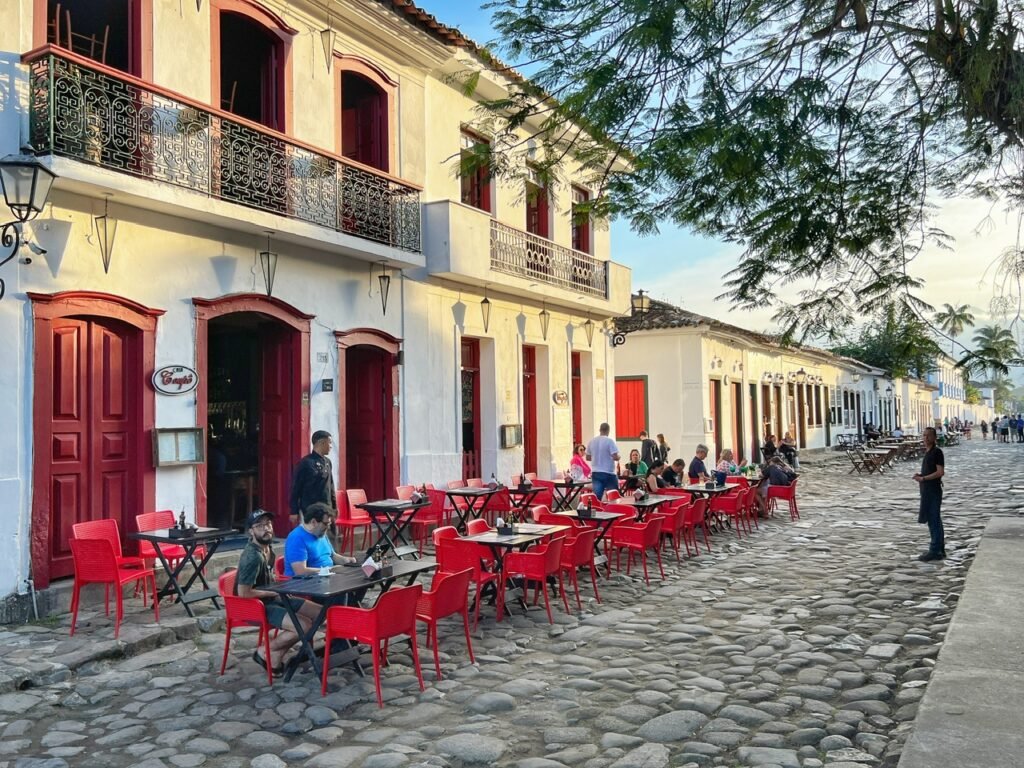
Embracing the golden hour as we carefully traverse the tremendous ankle-rolling stones.
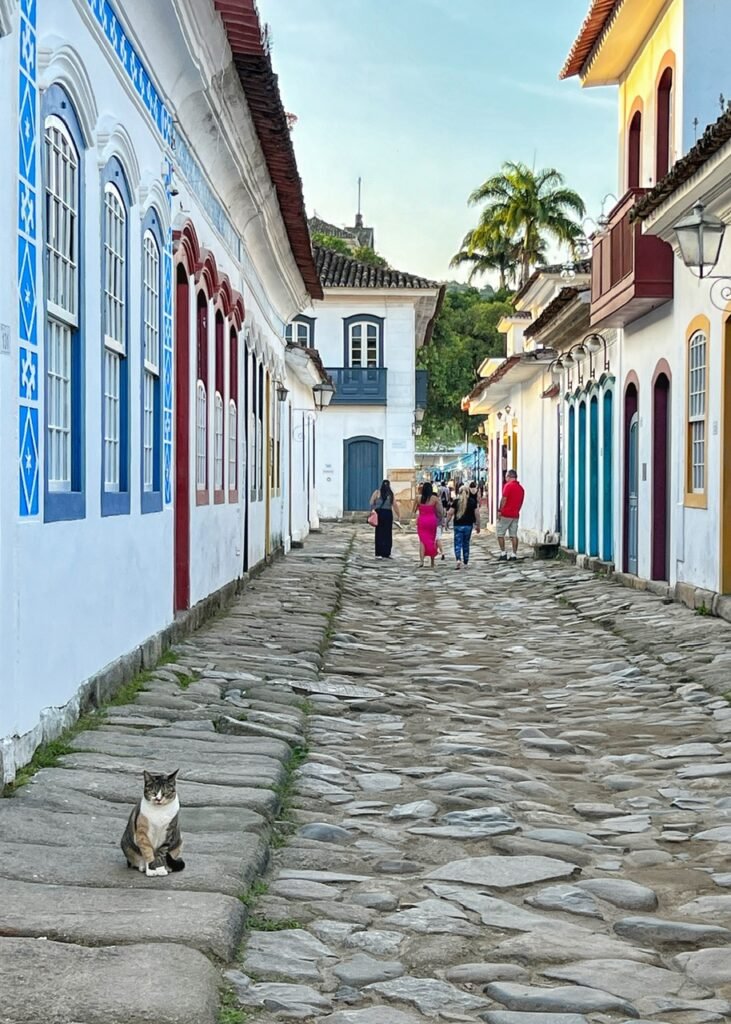
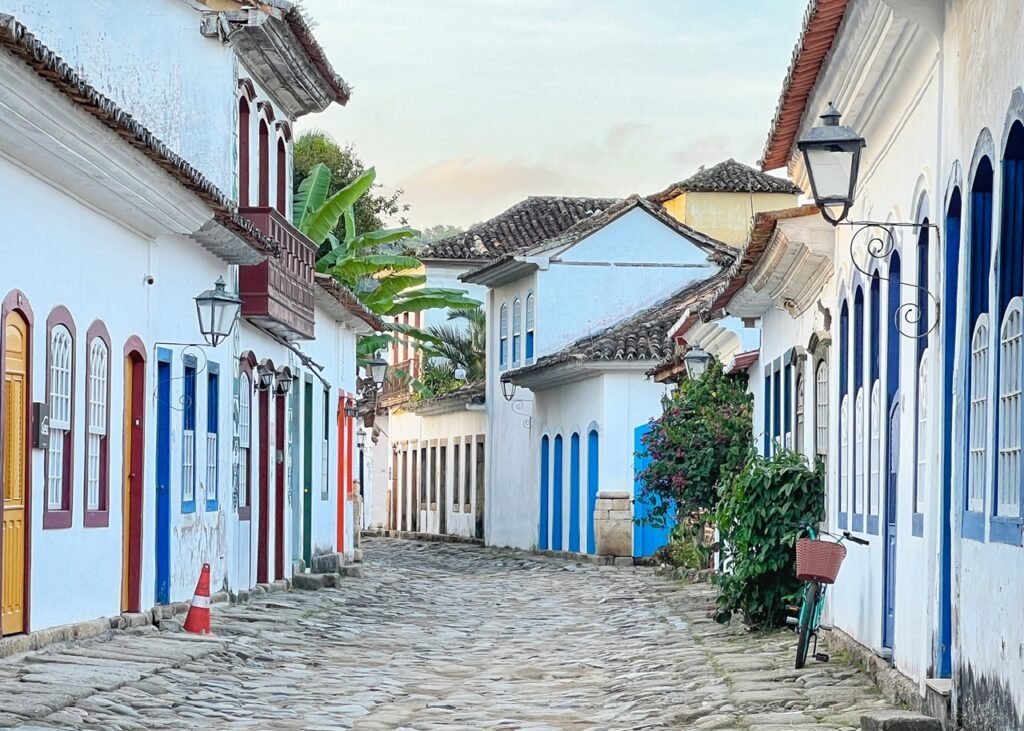
To complete the Euro-vision, sporadic felines roam the streets and the vibrant colors floods from every balcony, window and door.
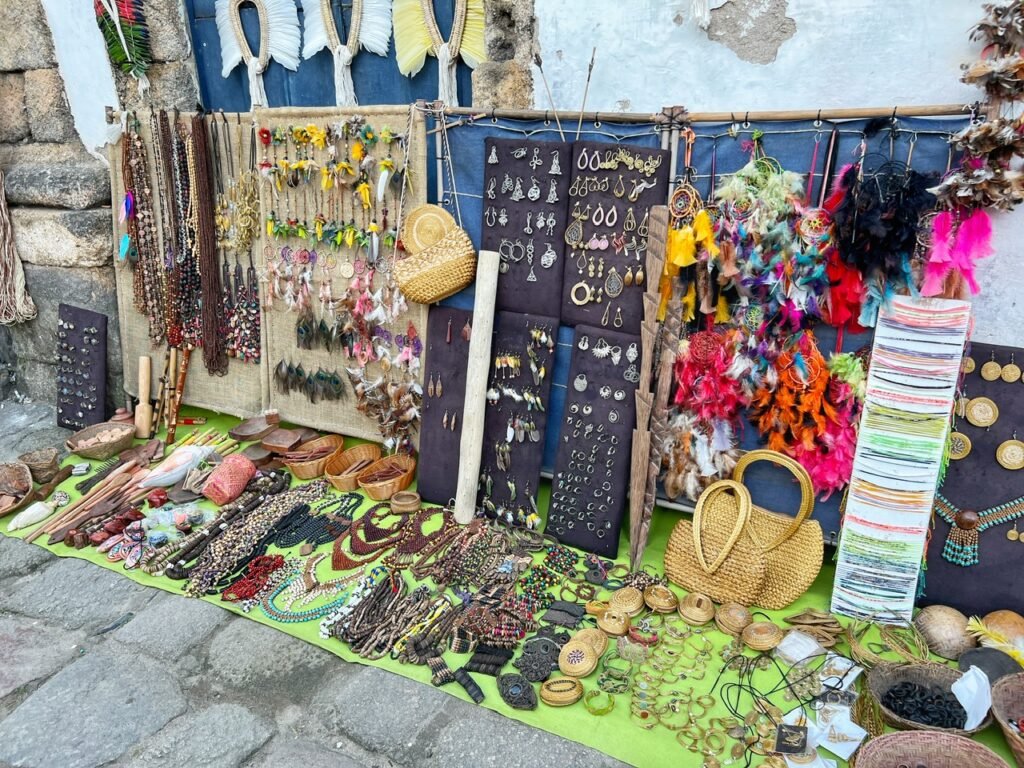
And dozens of vendors line the main thoroughfare showcasing their hand-made jewelry and crafts.

This photogenic dream is truly a joy to explore.

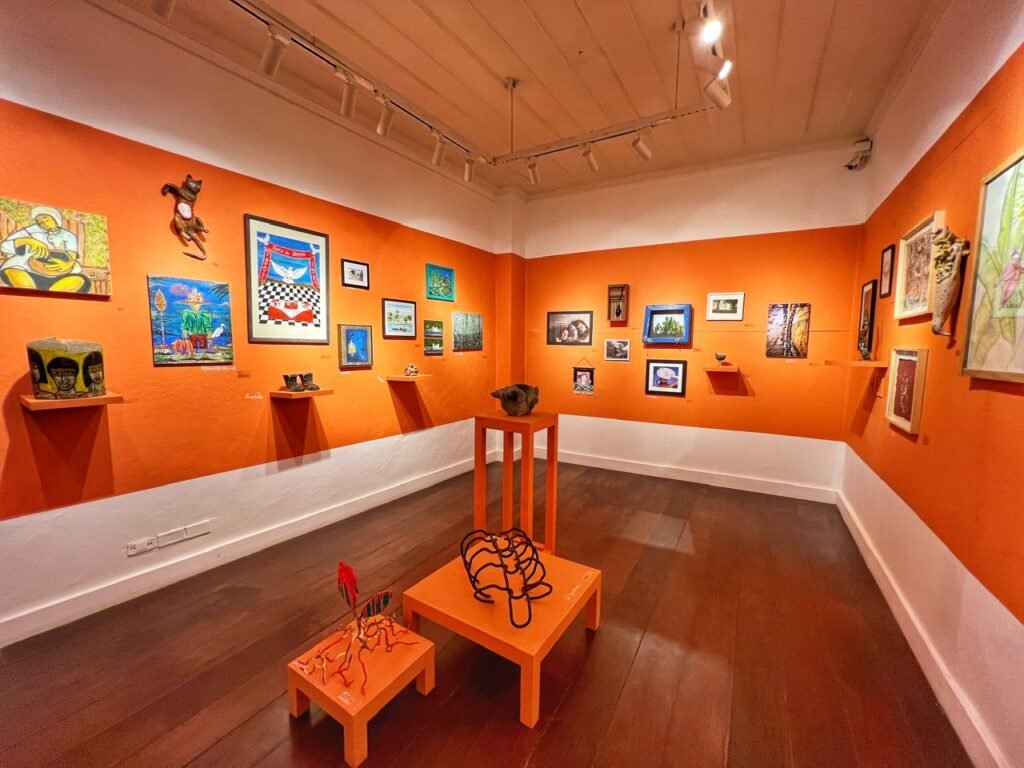
With the discovery of gold in nearby Minas Gerais at the end of the 17th Century, Paraty, built (beautifully) by African slaves, was an obligatory stopover between Rio de Janiero and the mines. It’s worth checking out the Casa da Cultura to learn some of this history and see galleries of local artists. It’s housed in a lovely colonial mansion and is free to enter, although a donation is requested.
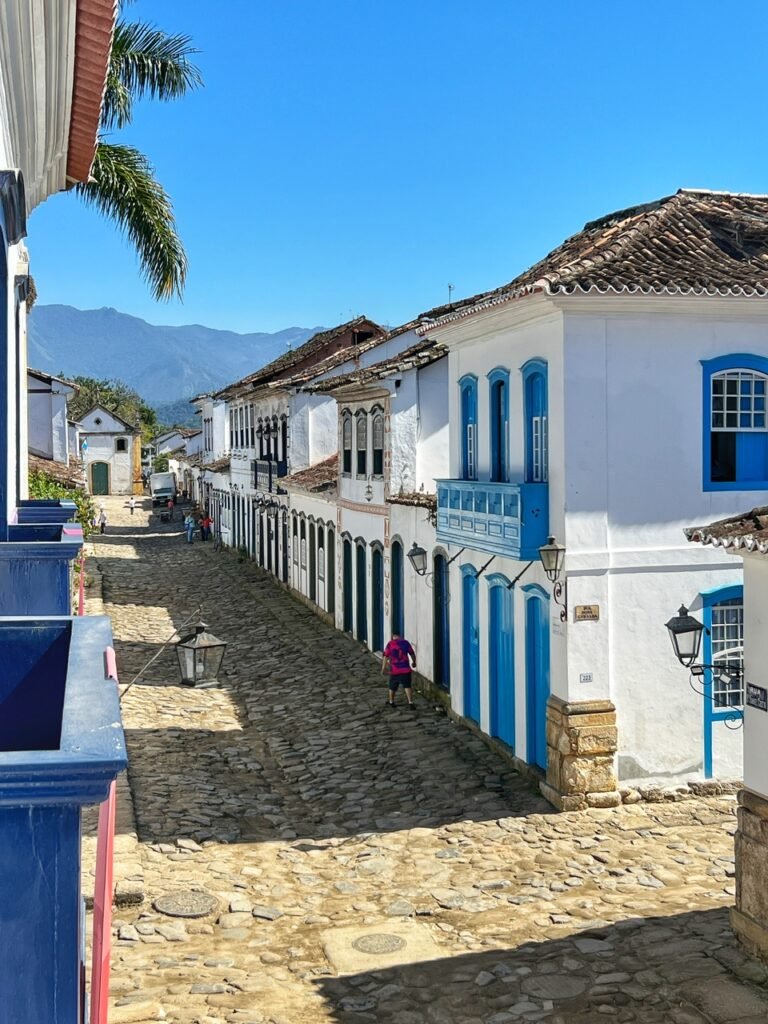

It offers fetching views from its upstairs windows as well.
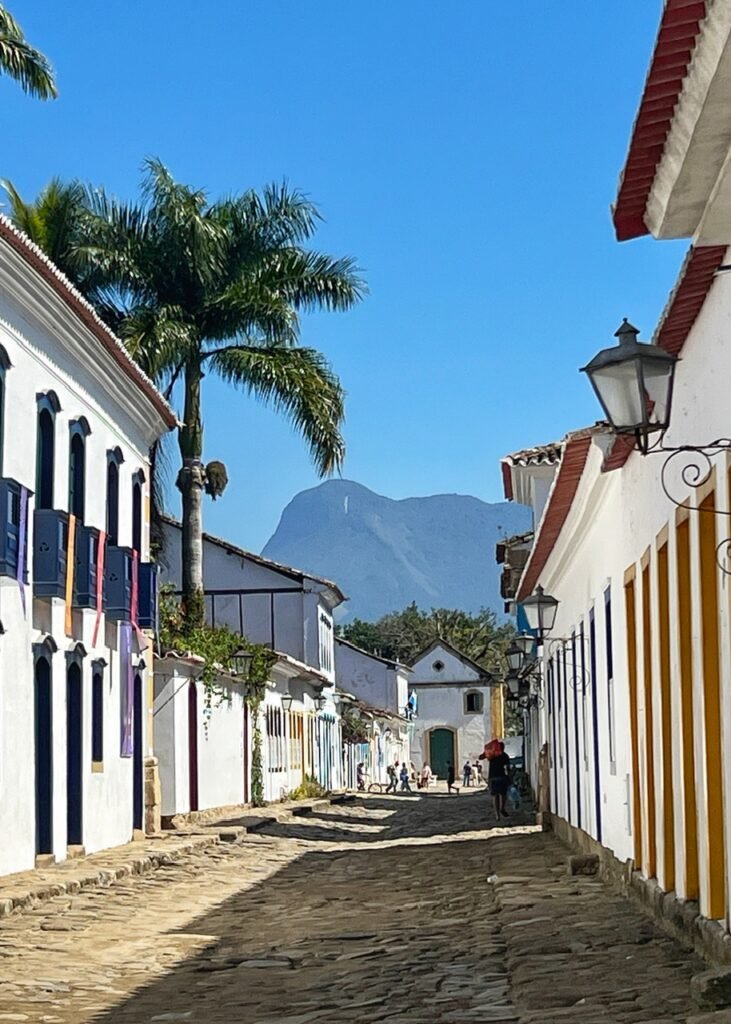
The mountains in the background are the icing on the cake.
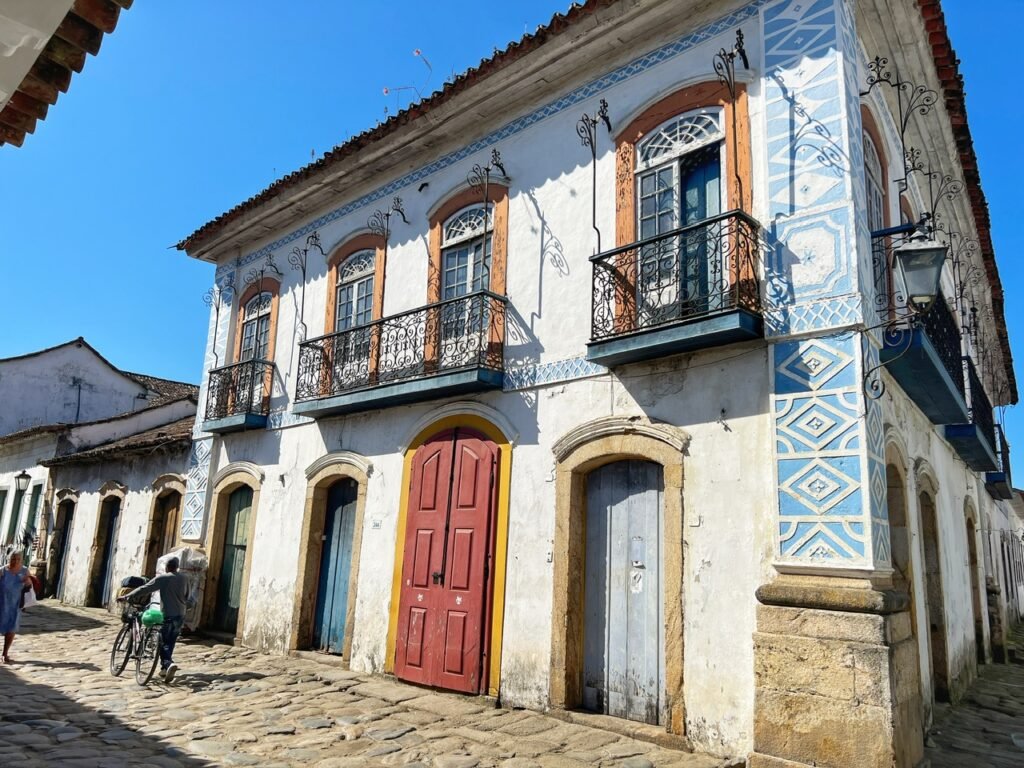
So many interesting architectural and colorful features going on here.

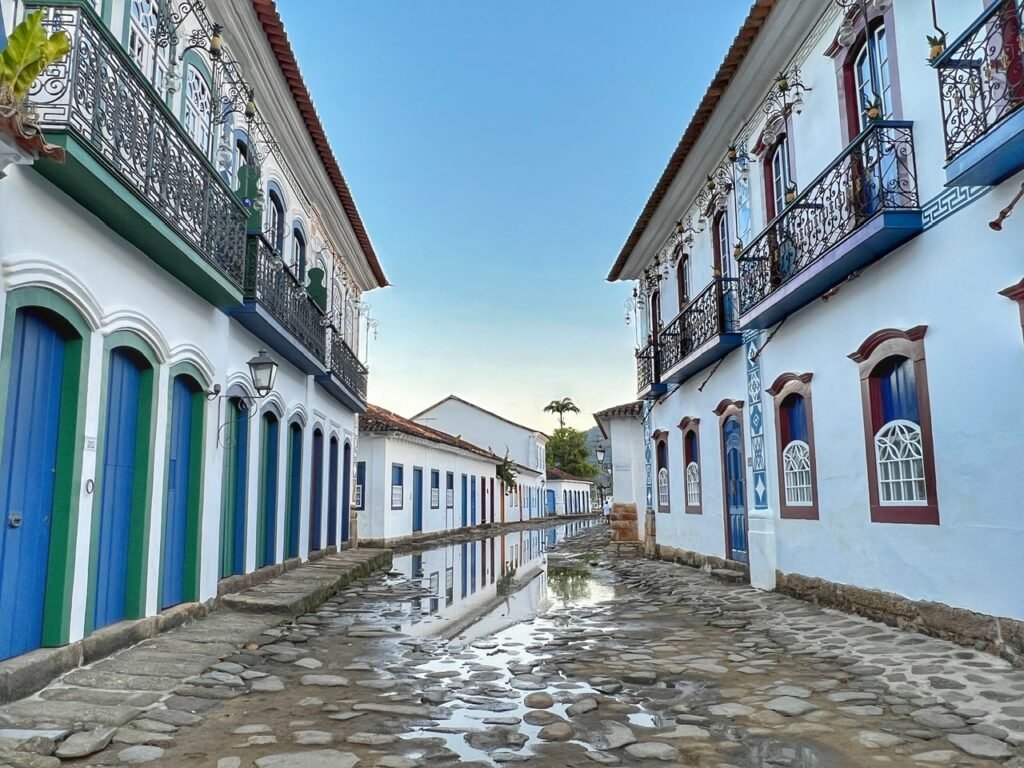
Even though it has not rained much recently, the streets of historic Paraty nearest to the sea were flooded from rising water caused by the super moon tidal shifts. It is why everything is elevated, because the water parks itself directly under the doorsteps.
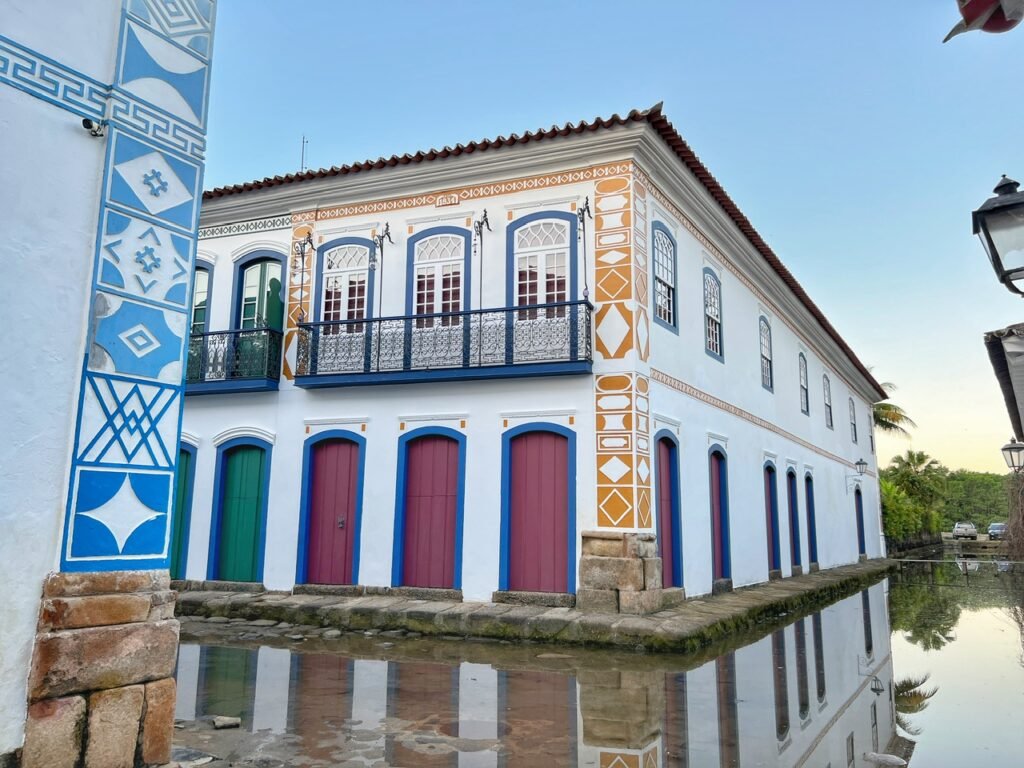
I guess this has been happening for hundreds of years, but it seems they better act quickly to preserve this beauty from the additional effects of climate change. 😬 Because It was already difficult to navigate…
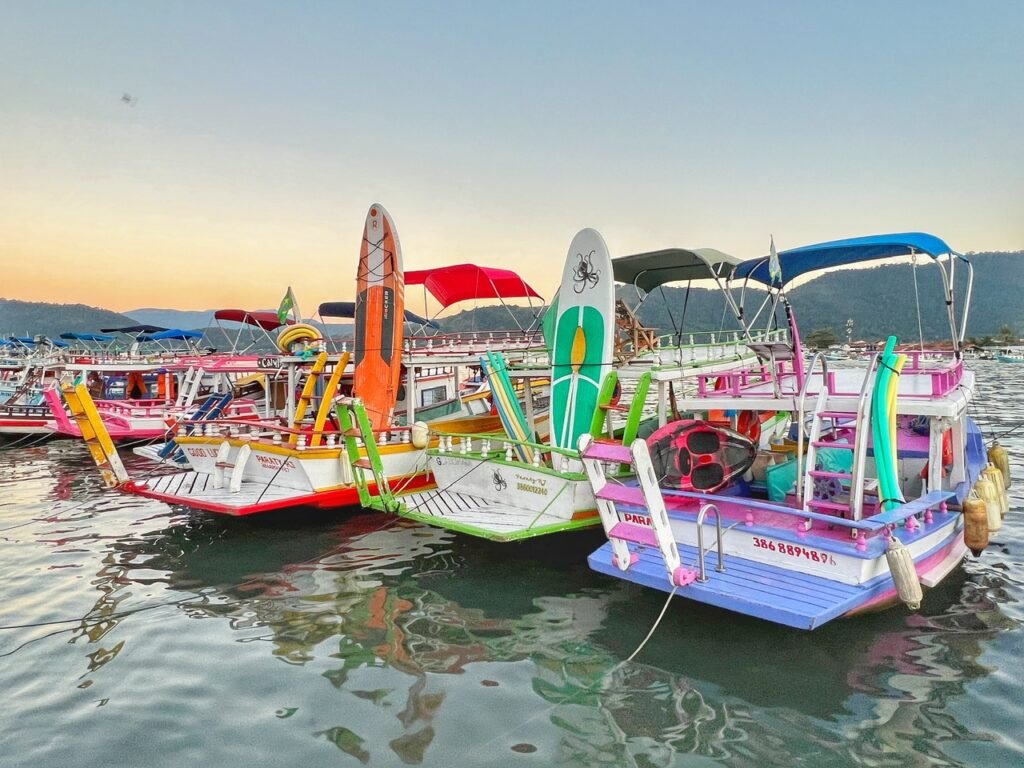
Heading out onto the bay, we encountered more rainbow-splashed boats resembling overgrown children’s toys…
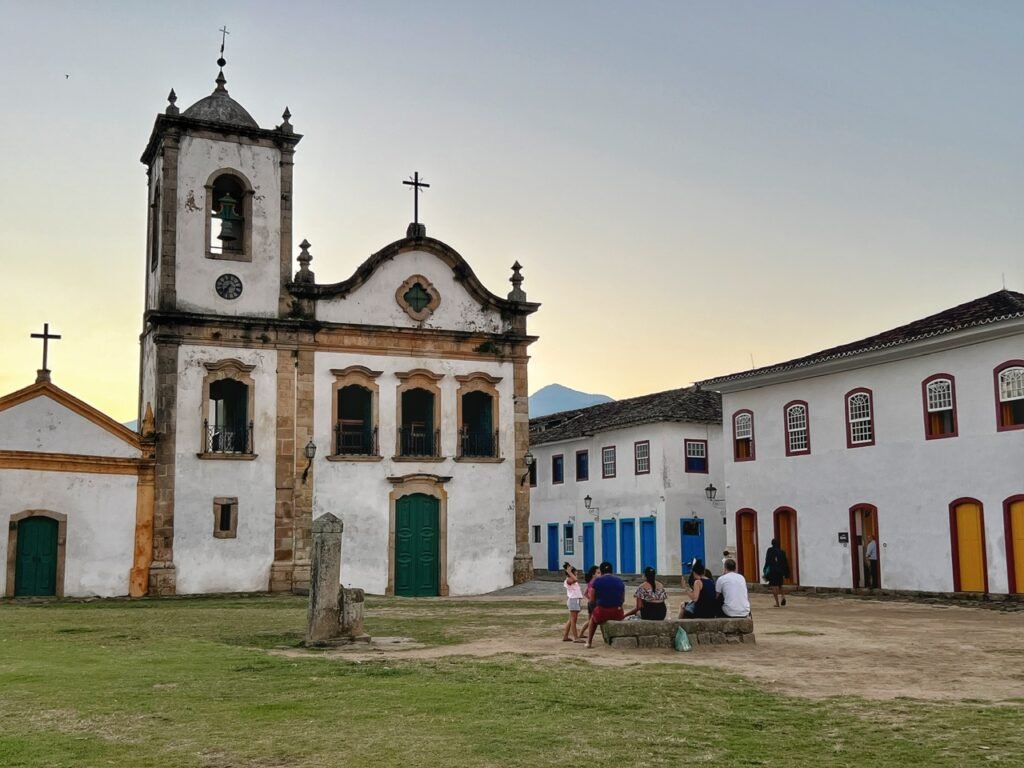
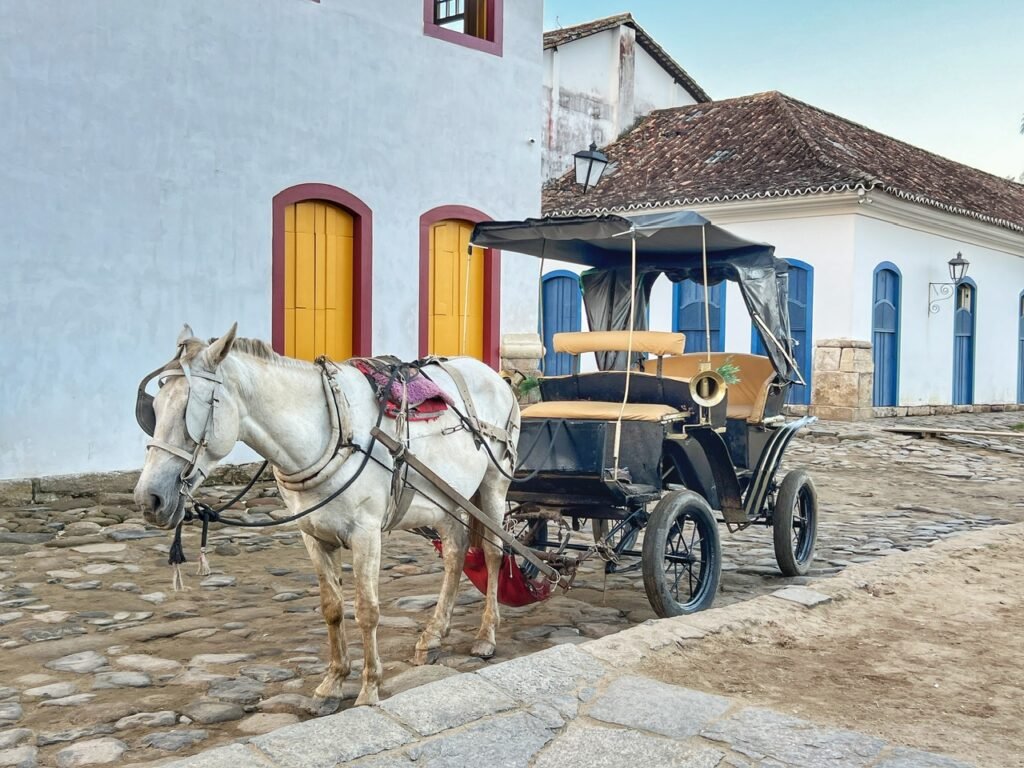
…and other icons of centuries long ago. This place is beyond safe, tranquil and romantic. We hadn’t been in a setting like this in quite some time.
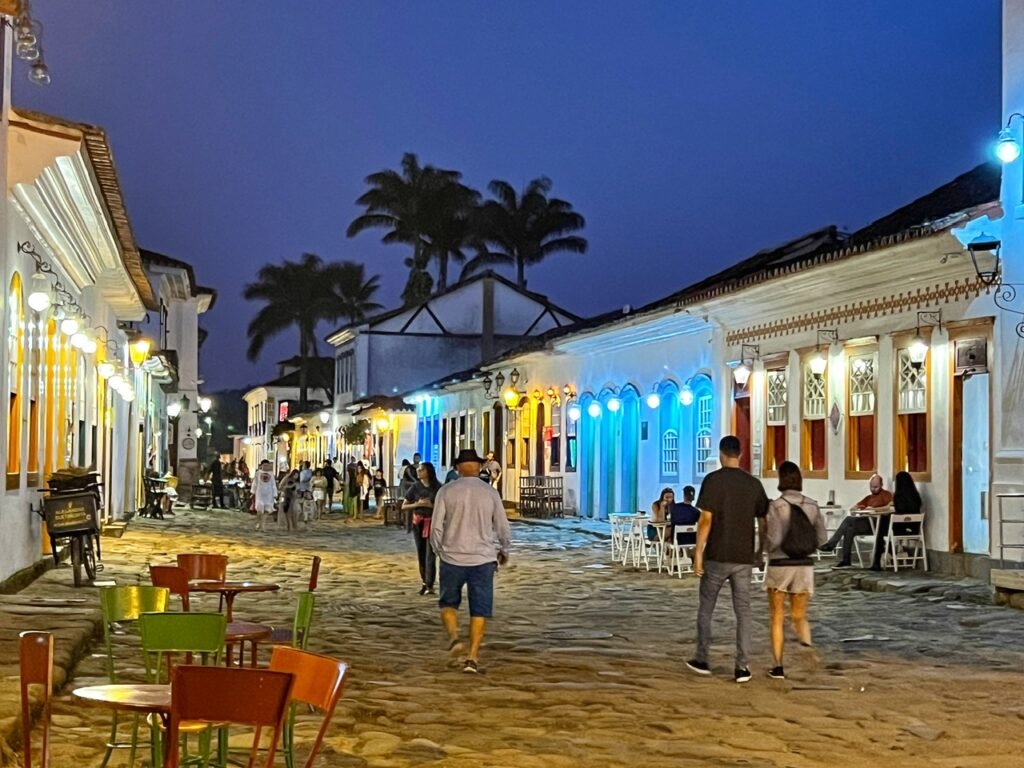
Even by night.
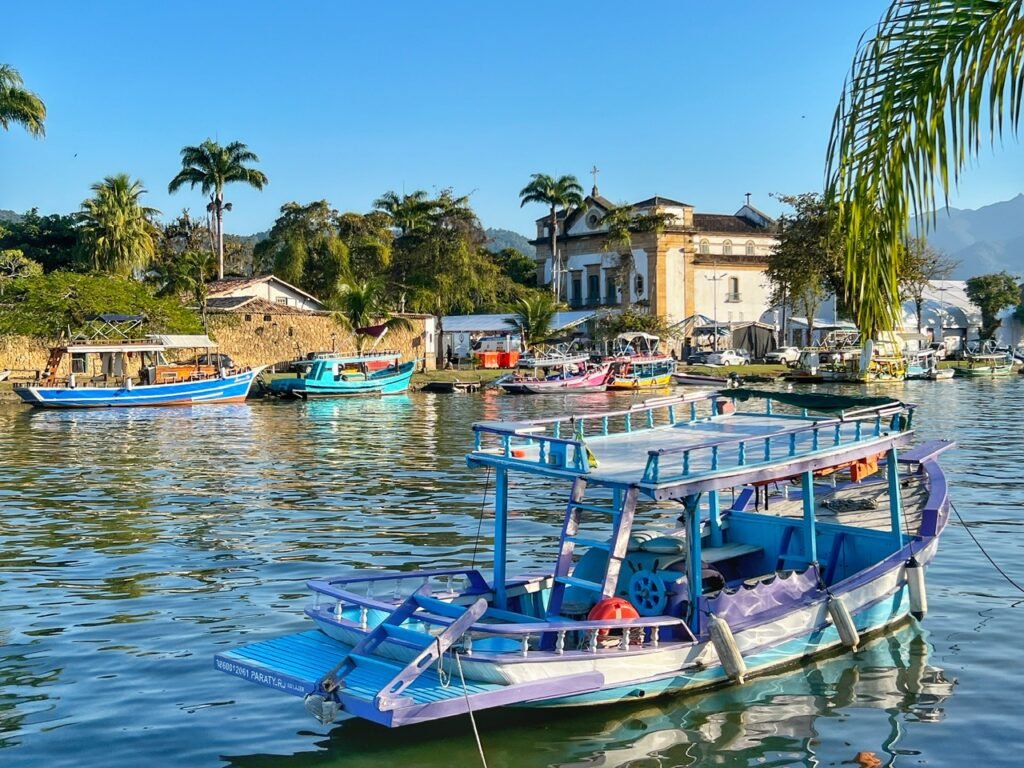
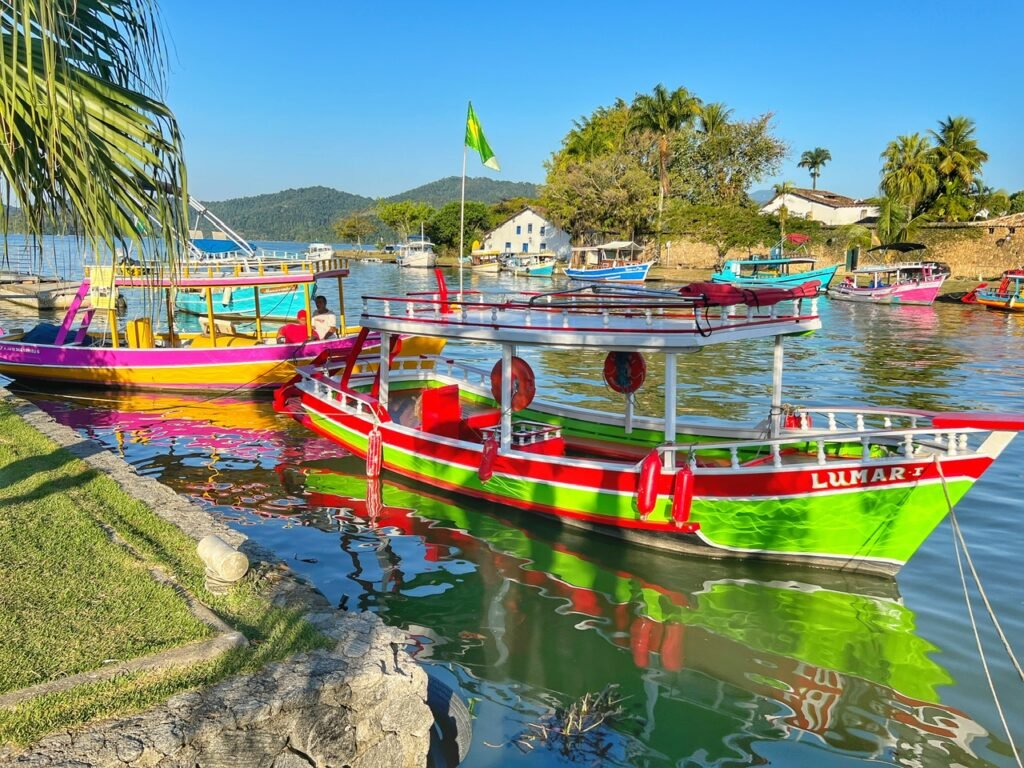

More eye-catching canal boats. One looks like it might belong to one of Santa’s Caribbean contracted elves? All it needs is some fairy lights. Another is perfect for Barbie’s dream date.
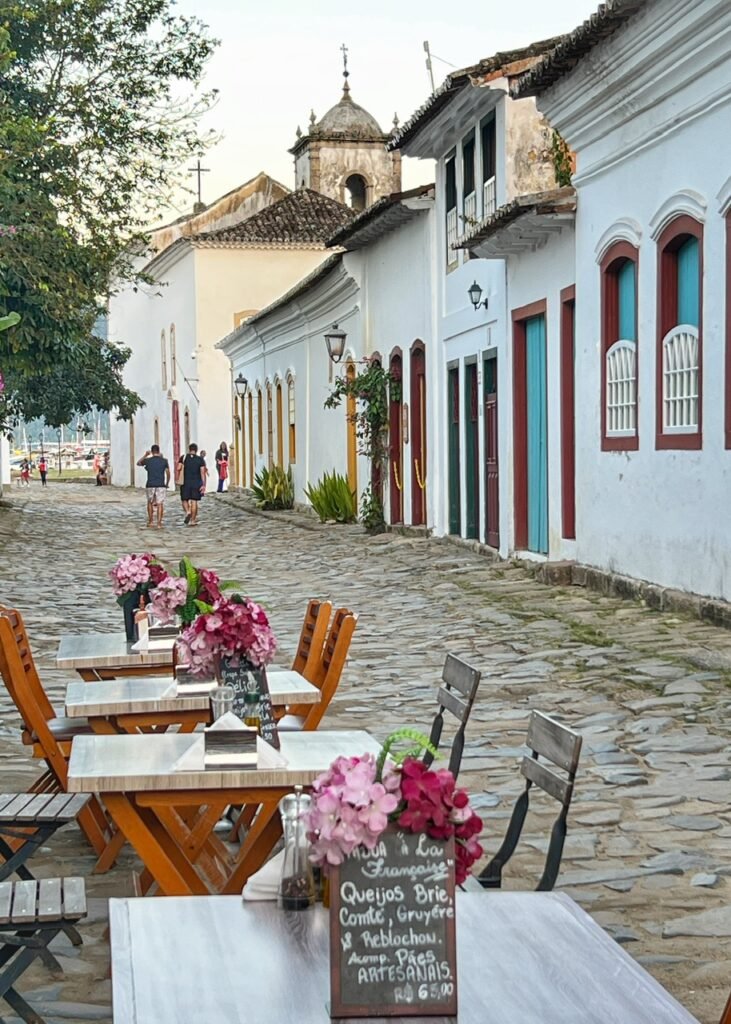
So many empty tables begging to serve. They usually fill in a bit more by 7 or 8 pm.

But the early mornings are completely idyllic.
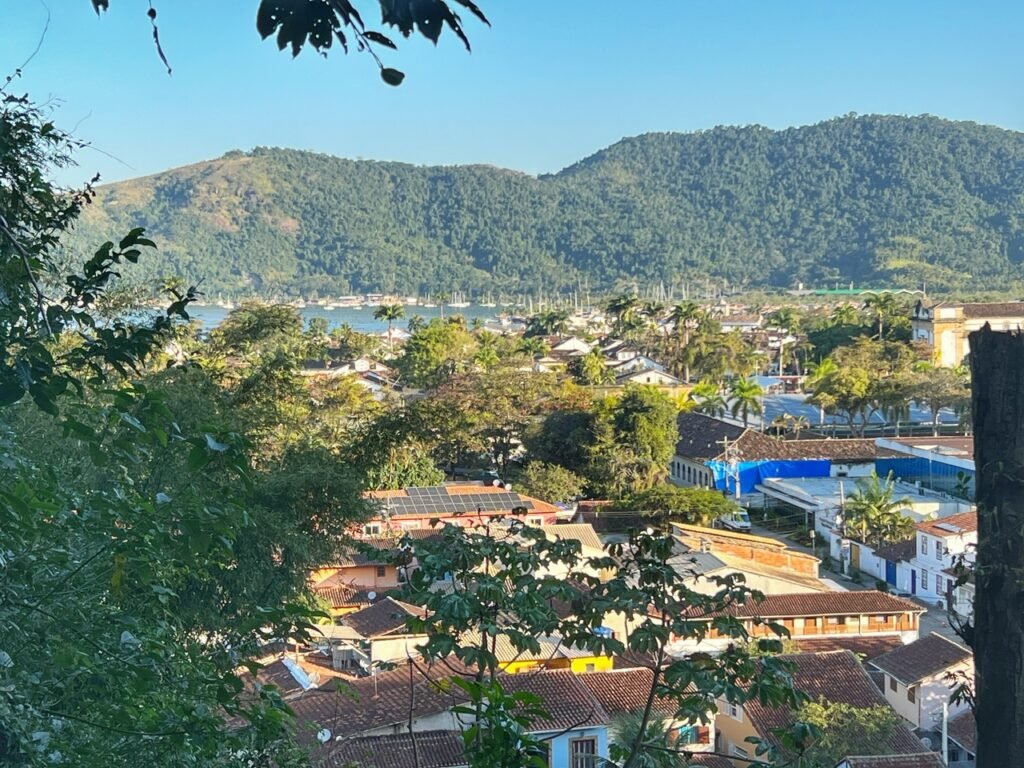
Walking up to the fort, you can grab a striking view of the historic center.
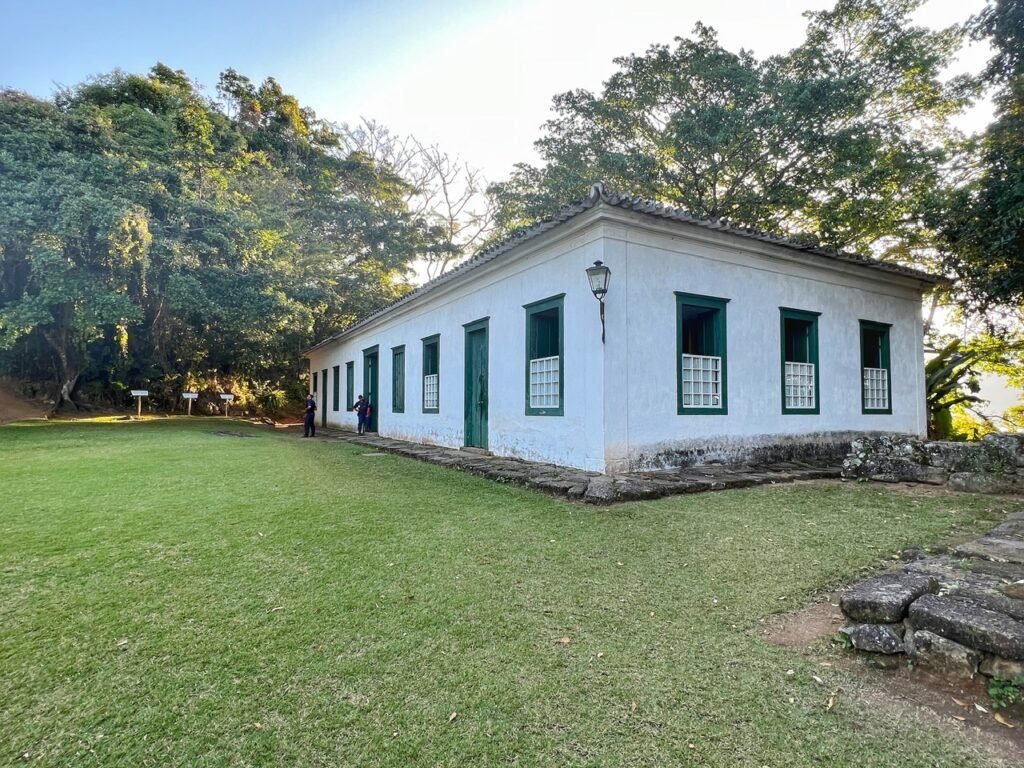
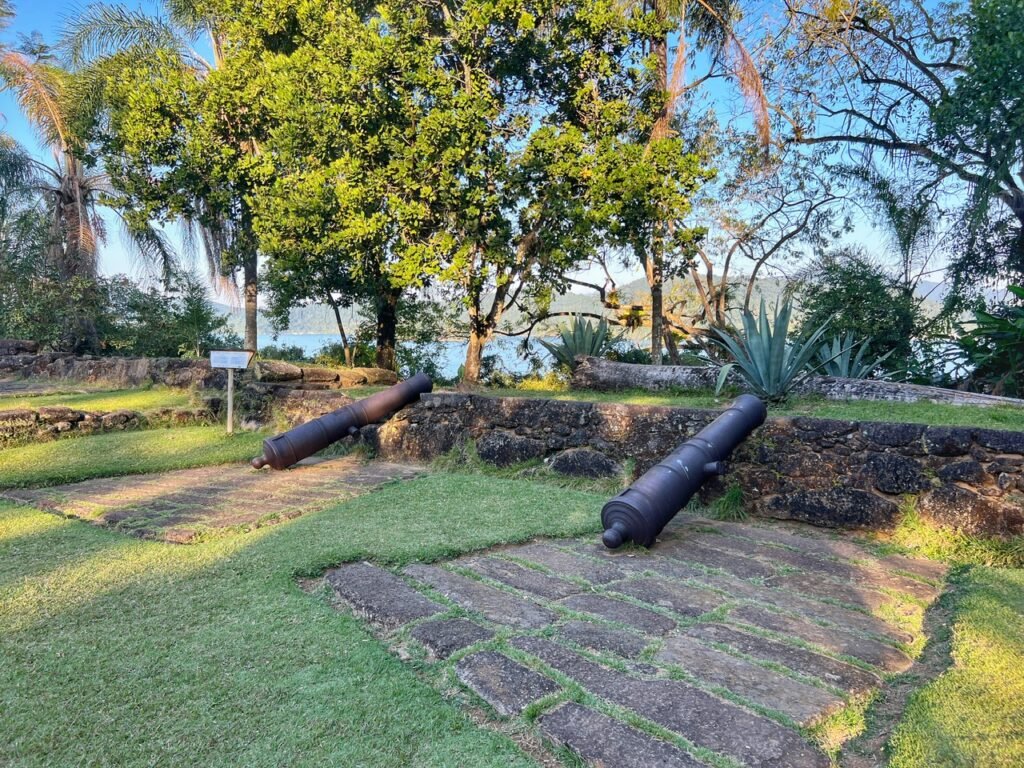
The free historic Portuguese Forte Defensor Perpétuo is well worth a 20-minute walk for its views. It was first built in 1703 and its original purpose was to defend the gold passing through Paraty’s port from pirate raids. There is also a small museum with rotating exhibits on history and culture.
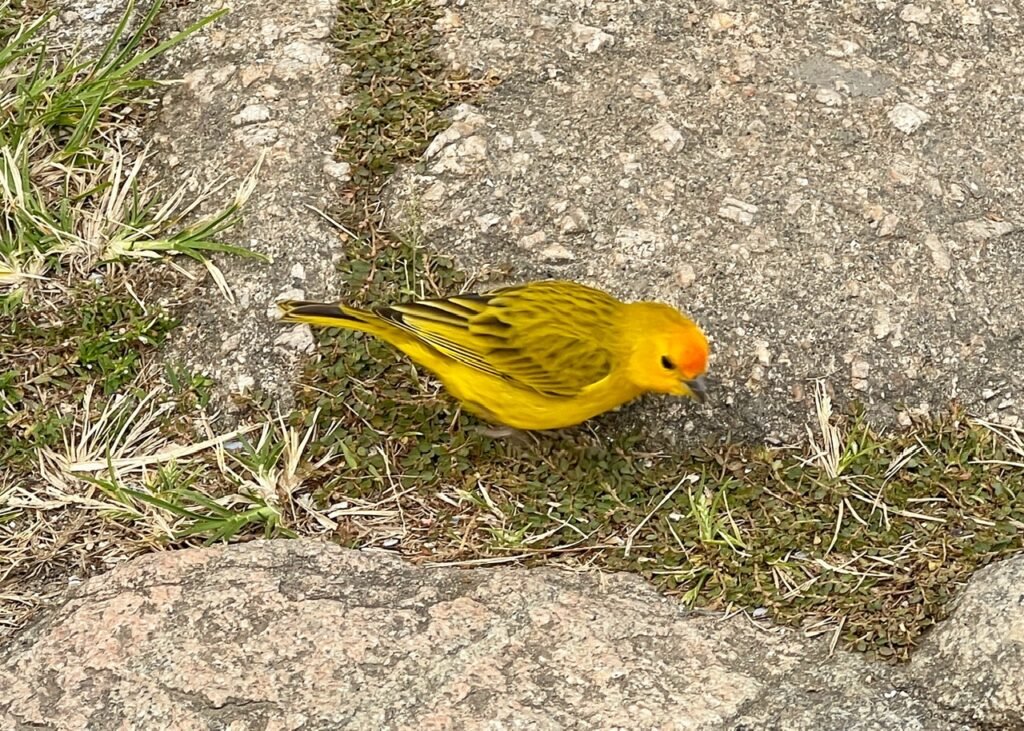
These little canaries are EVERYWHERE in Paraty! And like their look, they unsurprisingly sing the cutest melodies.
The Playa Side of Paraty
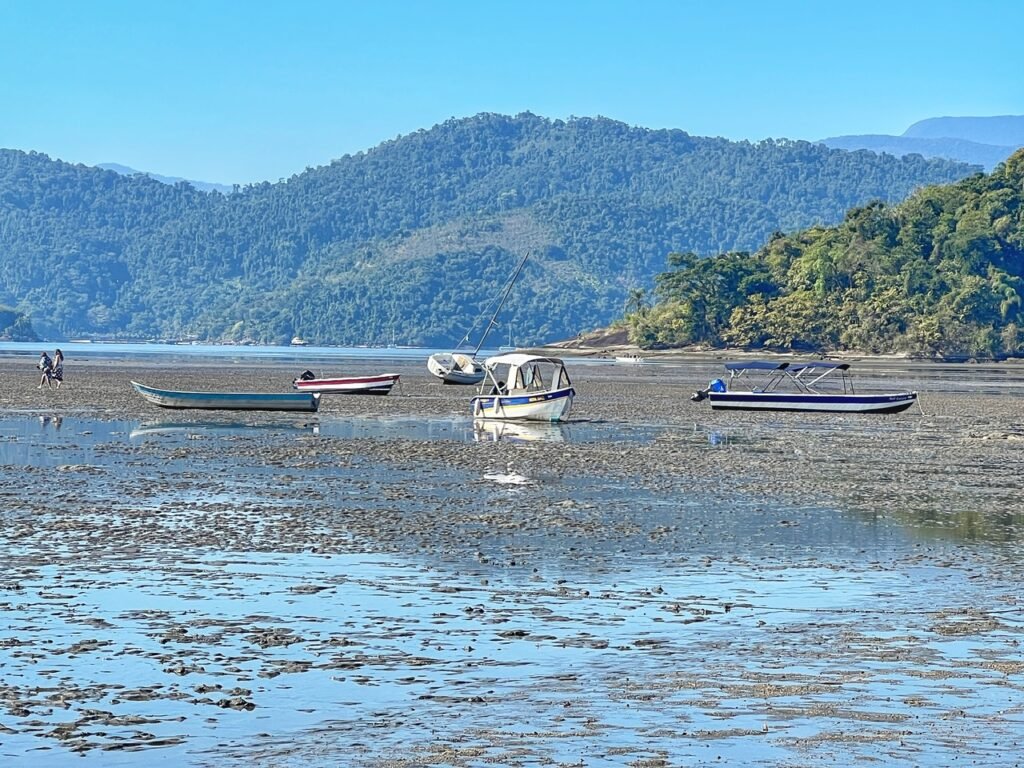
There are two sides to Paraty. The colonial cute land you just witnessed, and the canal and beach land, connected by about a 25 minute walk along Jabaquara Beach in the Carioca Bay. For our first two nights, we chose to stay about two blocks from the beach and “rough” the dreadful commute of walking into town. Along the way, we encountered multiple beach side shacks for sloshing back caipirinhas, playgrounds and volleyball courts which the locals used regularly, and surprisingly, following the super moon, a vast “sea” of nothing but sand and unintentionally dry docked boats. We hadn’t seen a tidal shift like this since Zanzibar, which was quite bizarre.
We believe that the beached boat phenomenon the next day could be from the moon causing a super tide shift, but this could be a regular occurrence. Regardless, it was so peculiar to see people walking out to what had been an island the day before.
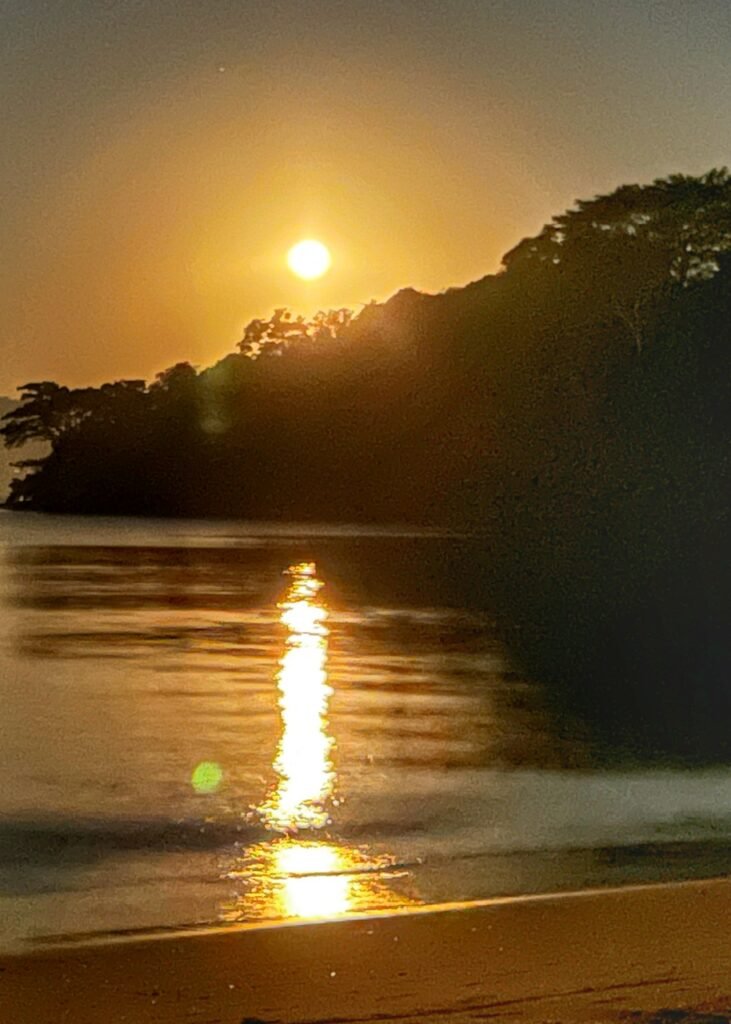
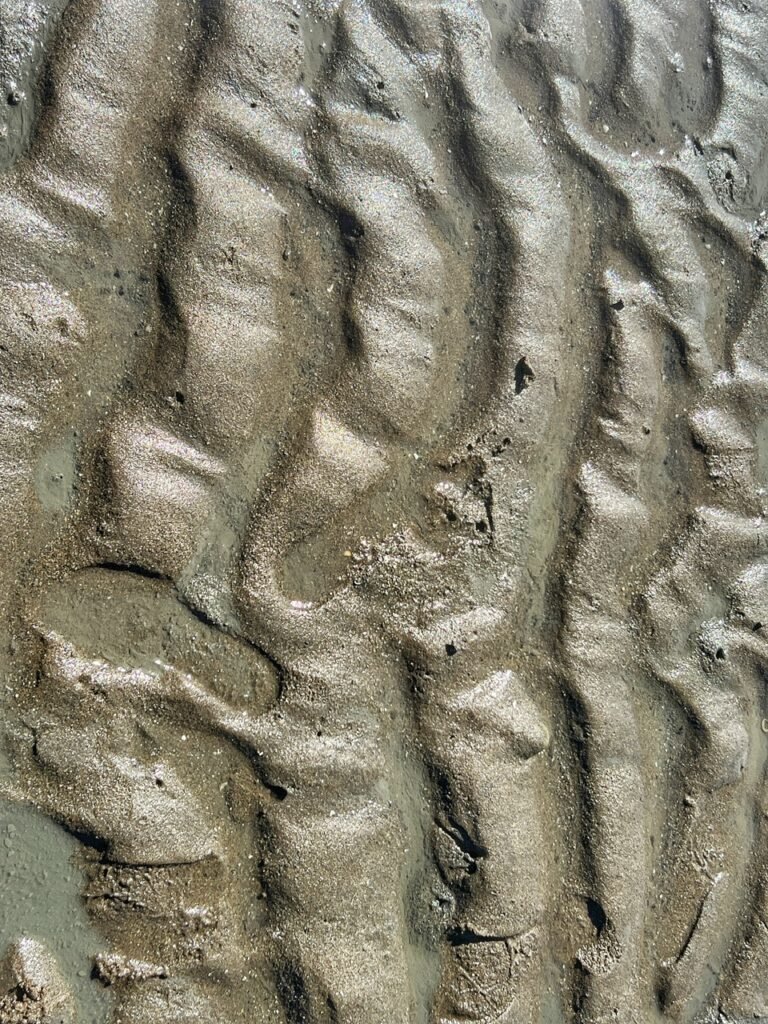
The Super Moon, which happens four times in 2023, was at a stage where it is closest to Earth. As we walked out onto the sea the next day, the sand below was bursting with clam bubbles.

Guess a boat ride is out this morning? Eek! Gravity might have some fun with this one.
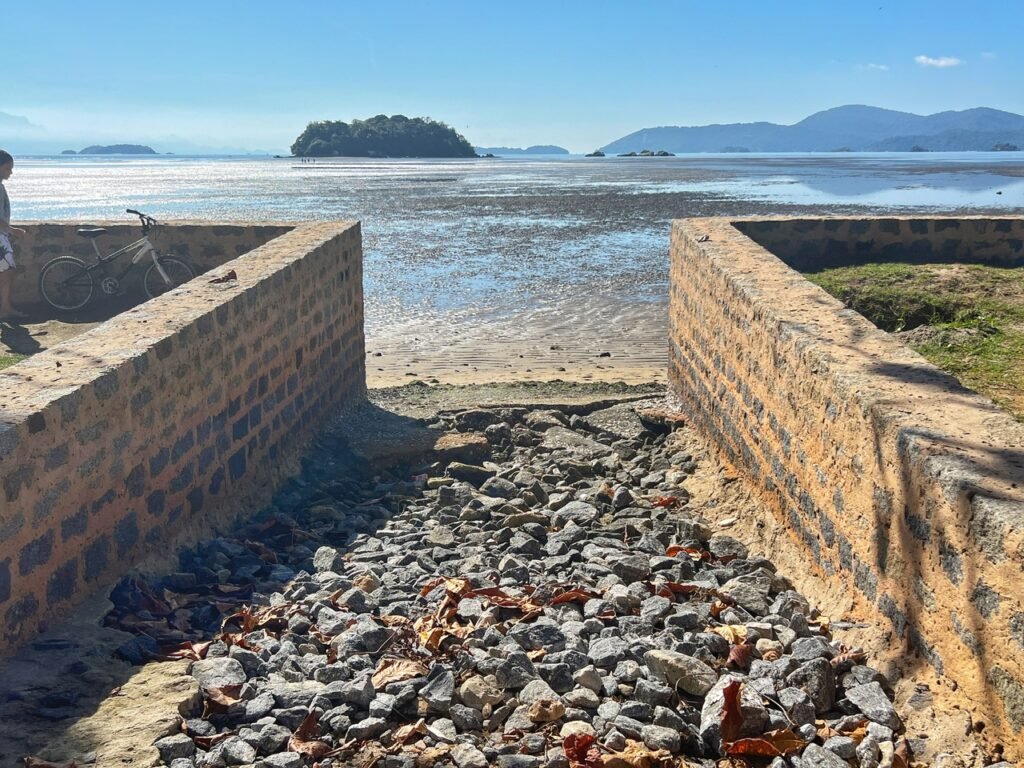
You can really see the distance to the island and how far out the tide extended in this photo. We only wish we had been there are it started rushing back in. Only three hours after this, the tide had returned reaching all the way to these stones in the foreground.
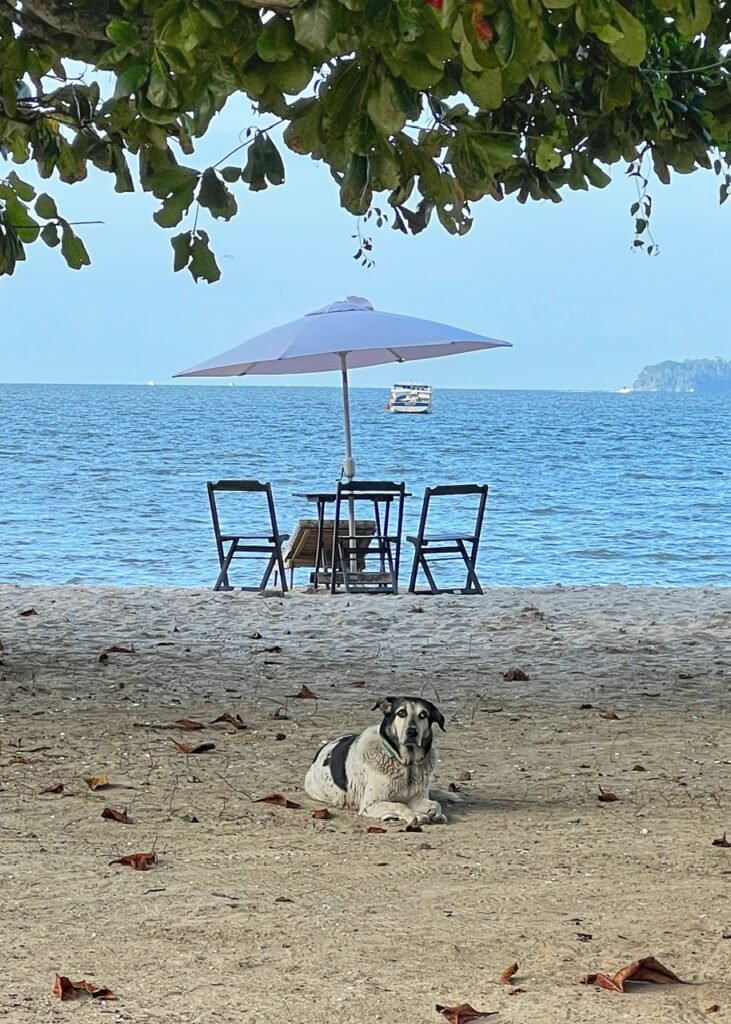
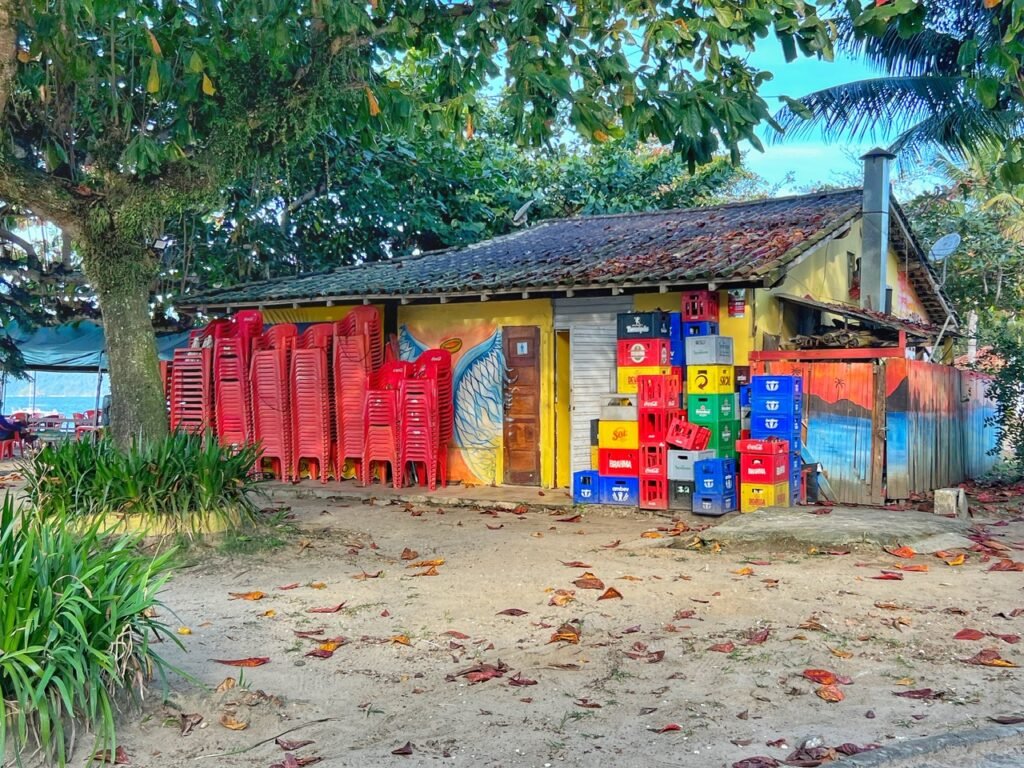
When we weren’t marveling at the sight of the super tide, there was still lots to see. For example, a different kind of squirrel…this dog was eyeing and growling at the marmosets when we walked by these colorful beer crates stacked next to this bar.
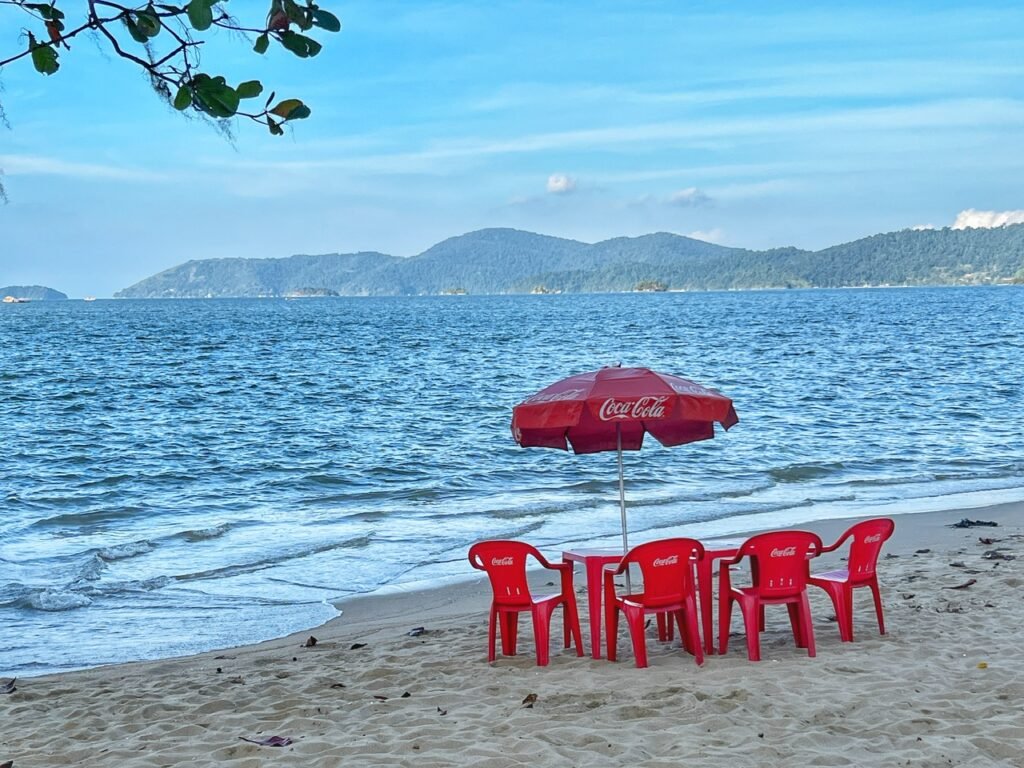
Anyone up for supper in the sand?

The path we walked regularly along the beach.
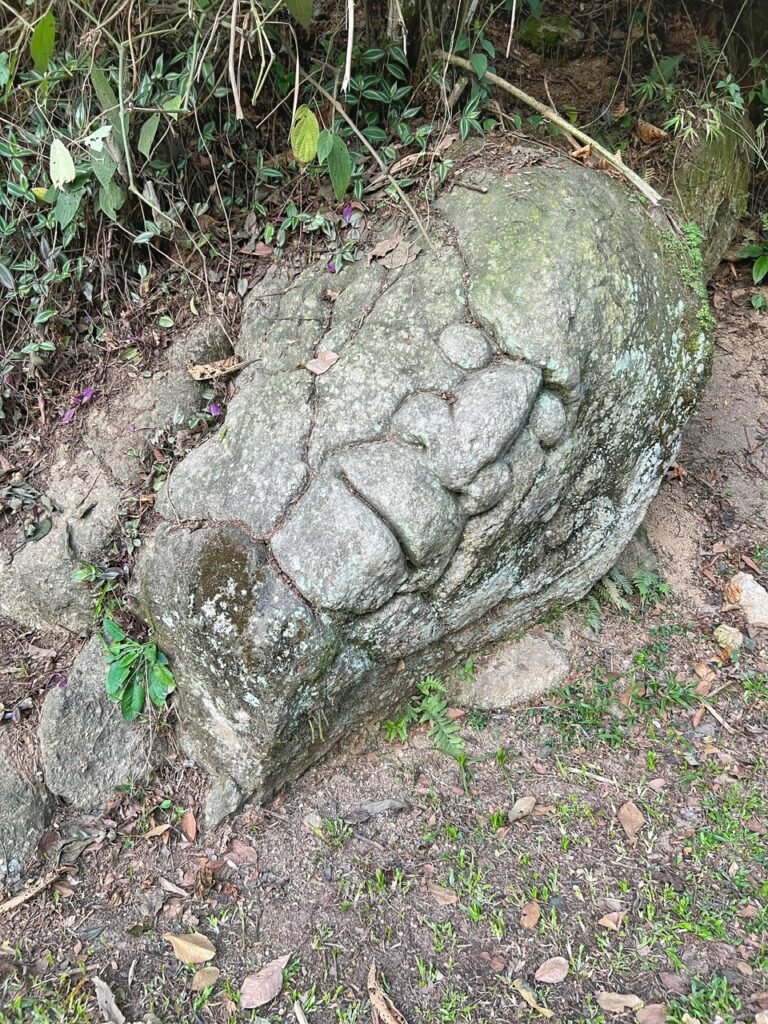
On the way up the hill, we found a vigilant face chiseled into the side of the road. He has probably seen it all.
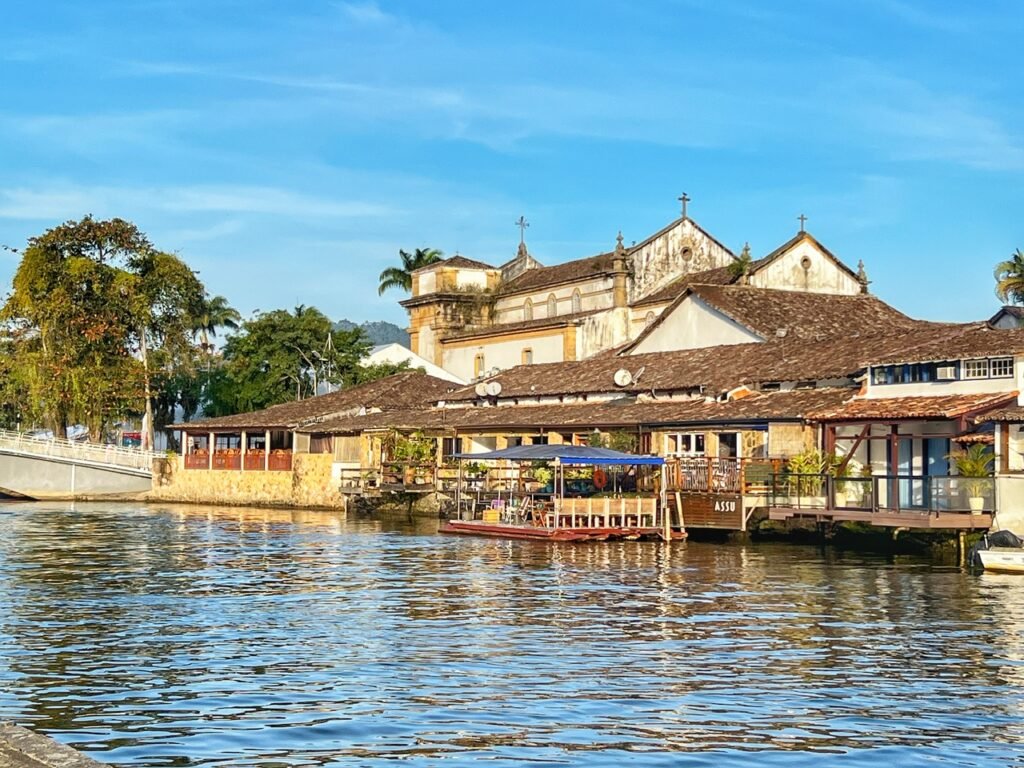

A simple footbridge over a charming canal connects these two vastly different lands in Paraty.
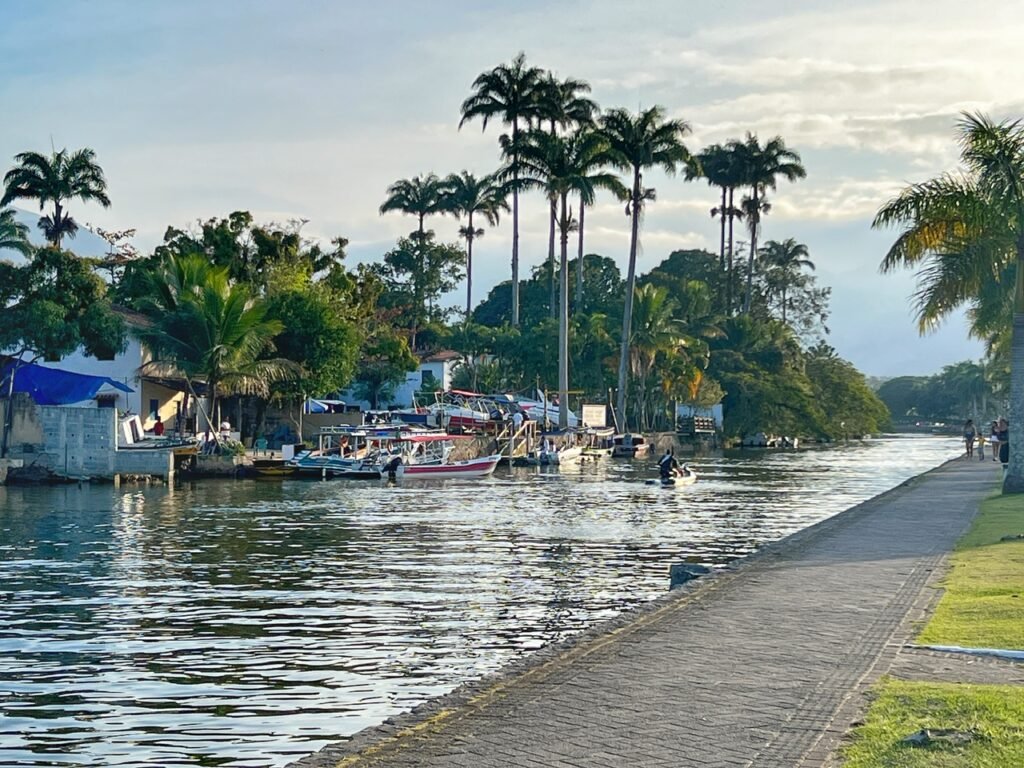
Here you can see the lush surrounding jungle scape and rolling mountains in the distance.
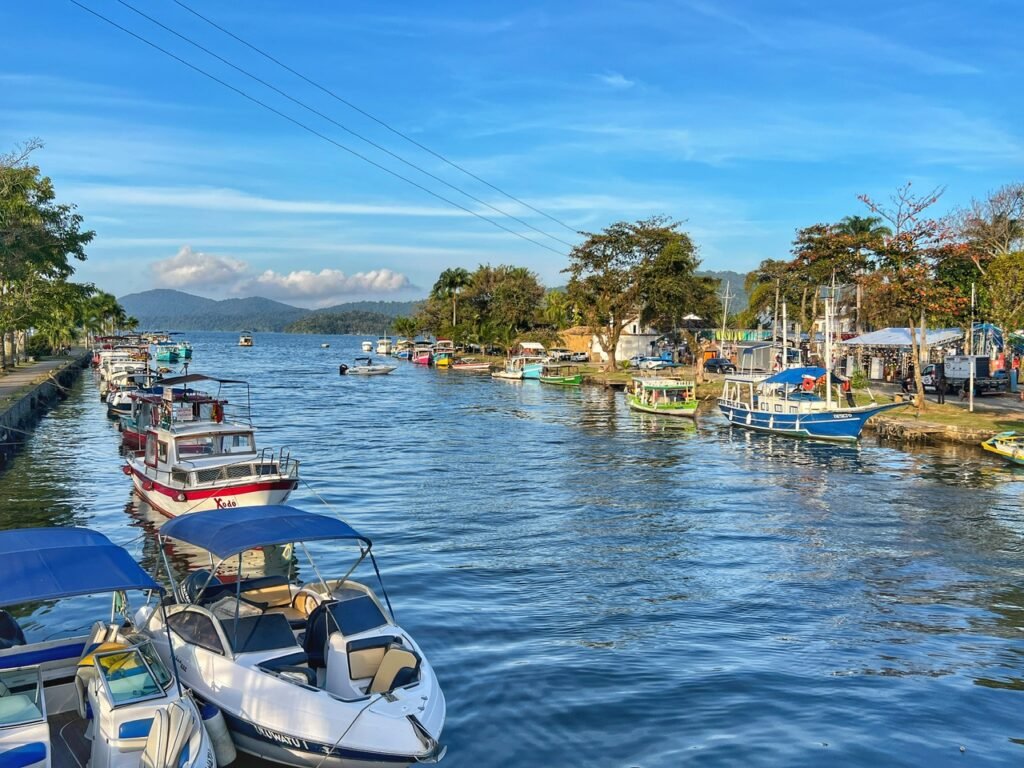
The canal uniting the bay, which soon joins the Atlantic.
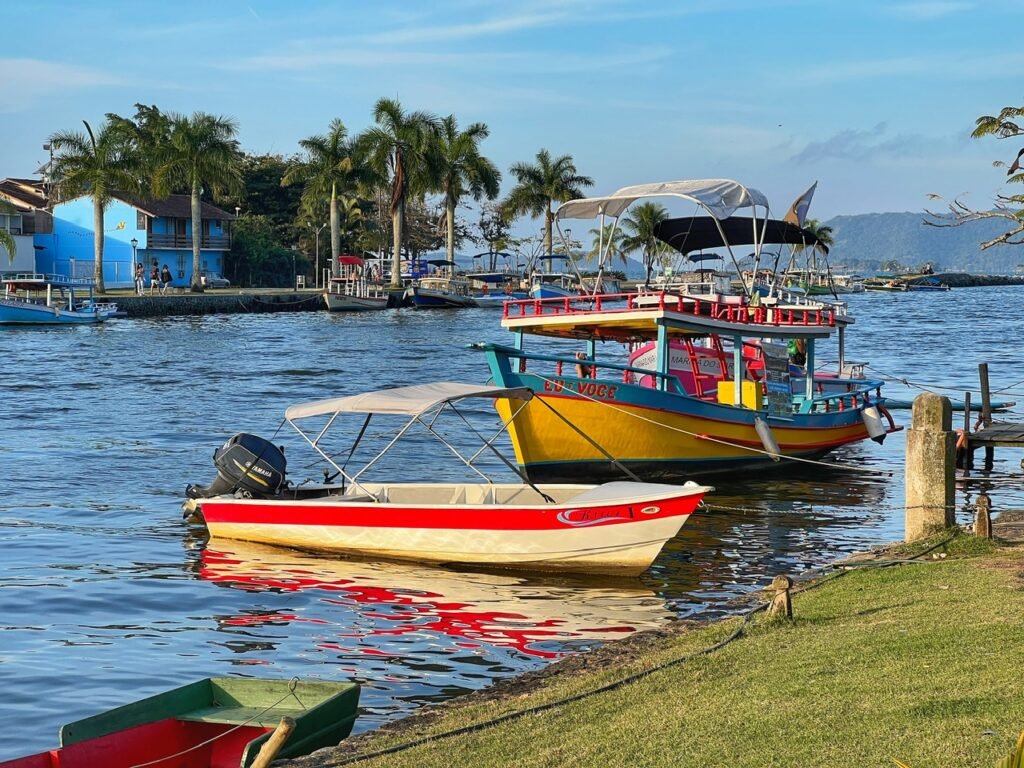
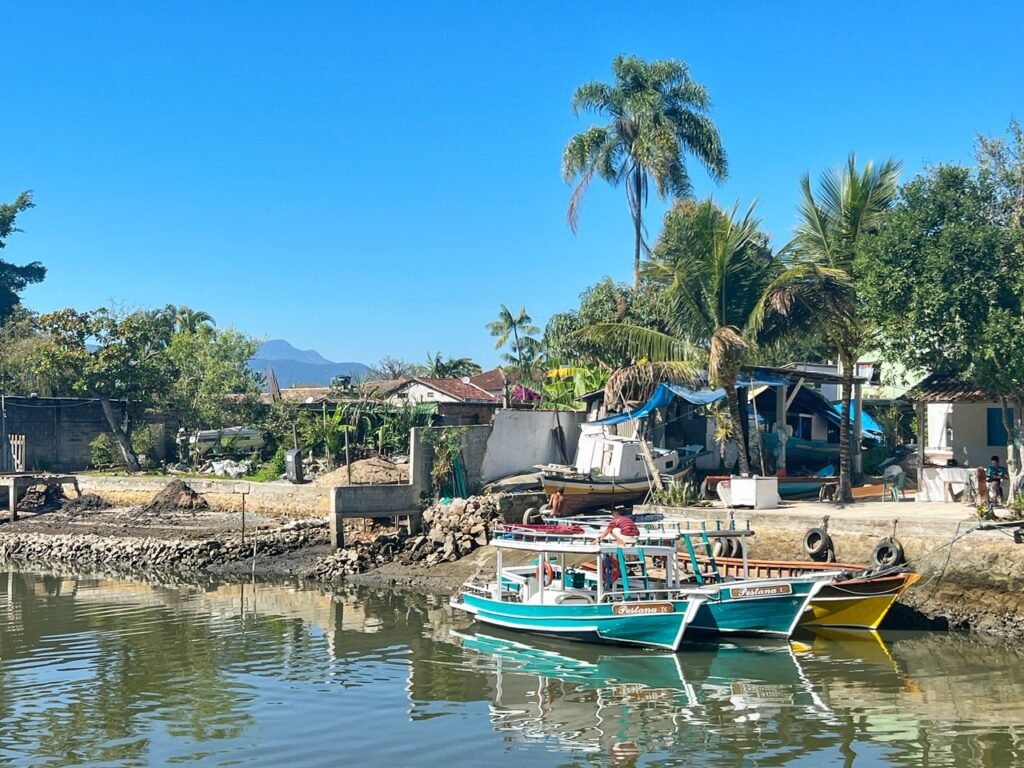
And so many adorable boats, colorful and inviting like toys dot the canal in both directions.
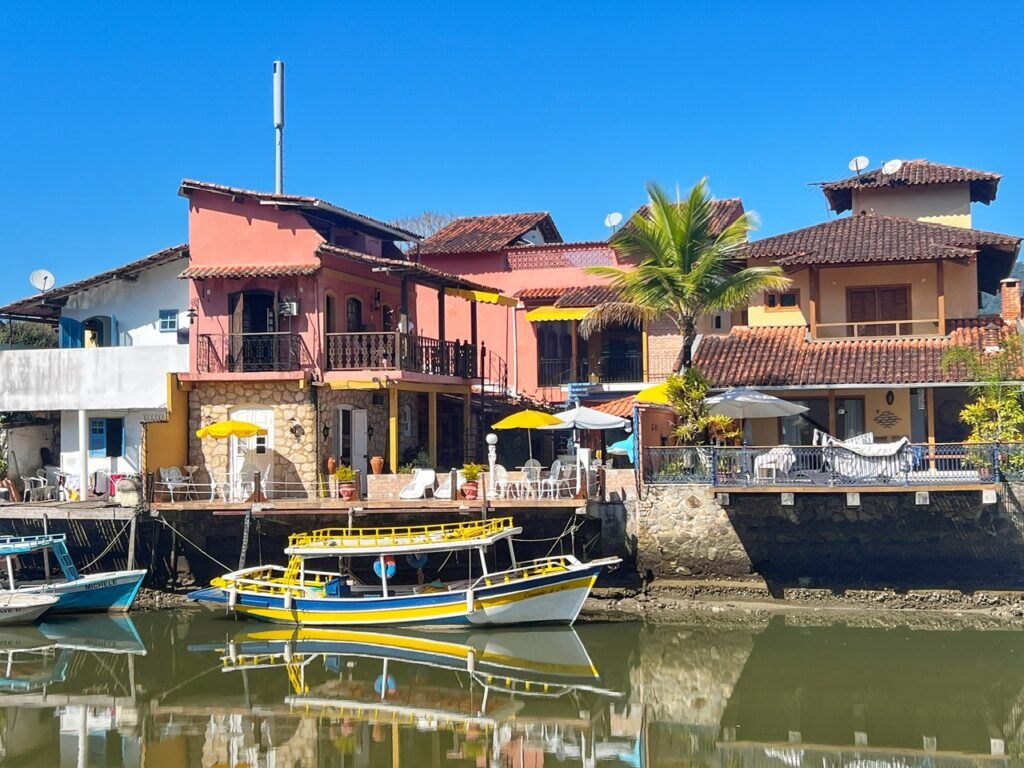
Many accommodations also have their back terraces canal side.
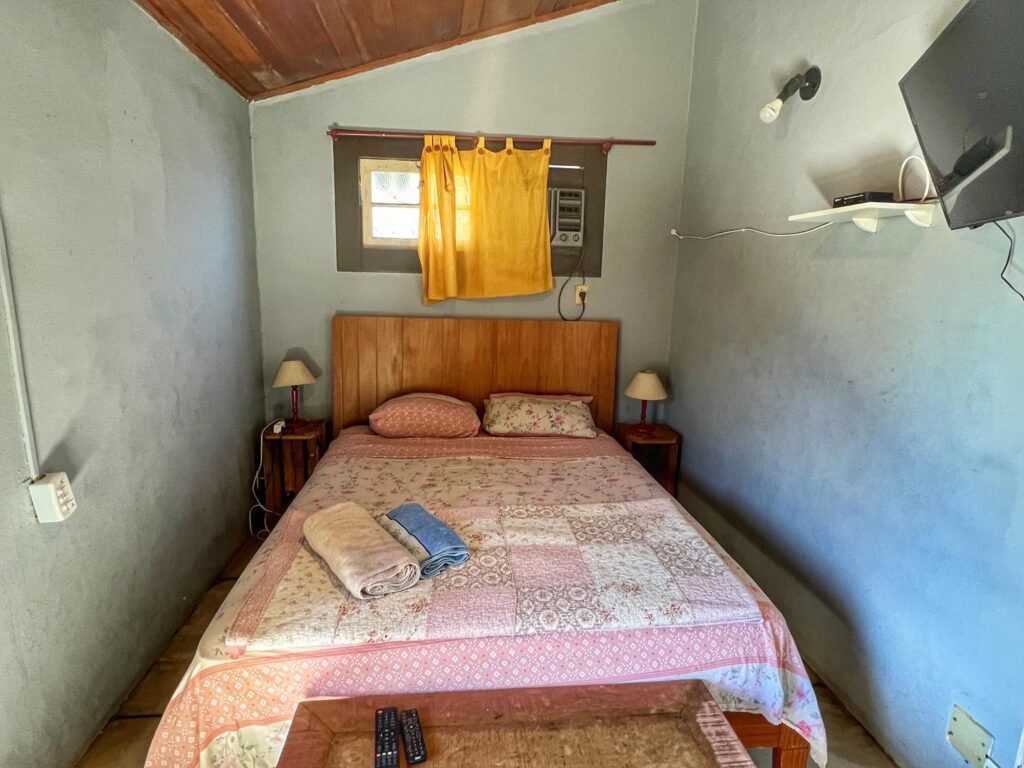
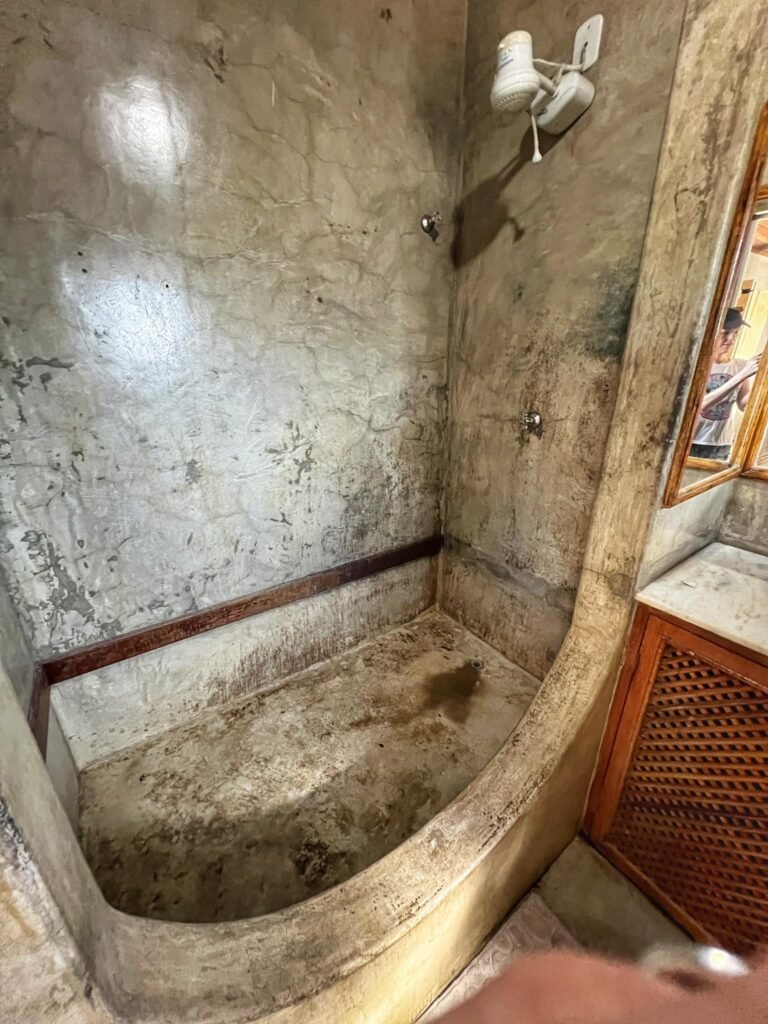
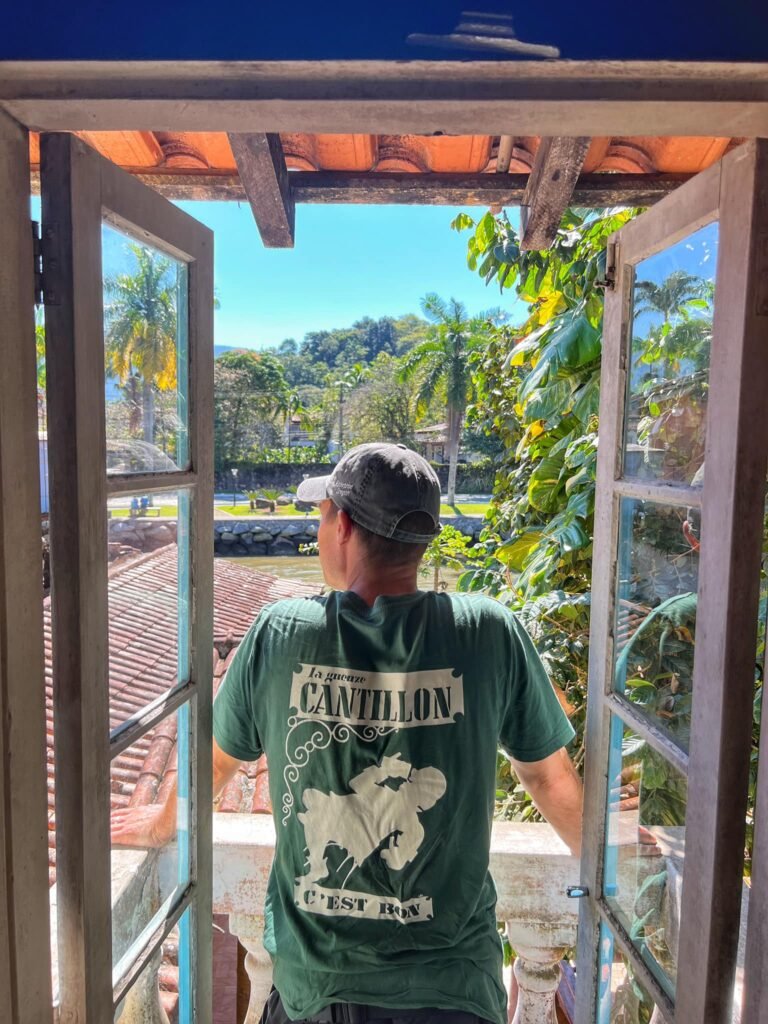
After two nights in our plywood box, we decided to grab one of these rooms at Maracuja Hostel for at last-minute for a deal at $24/night, breakfast included. It also had the first hot shower we’d had in months. That said, it was still a suicide shower, but we only felt a little bit of zing. (Joking)
From Paraty, we had a big decision to make. Our original plan was to cross Southern Brazil overland into Uruguay. However, once we started calculating the obscene prices of bus travel in Brazil, combined with our lack of excitement about the general itinerary and more wintry weather heading south, we decided to make a new plan and instead return to Rio de Janiero for a more northerly route.
A Few Things to Eat in Paraty

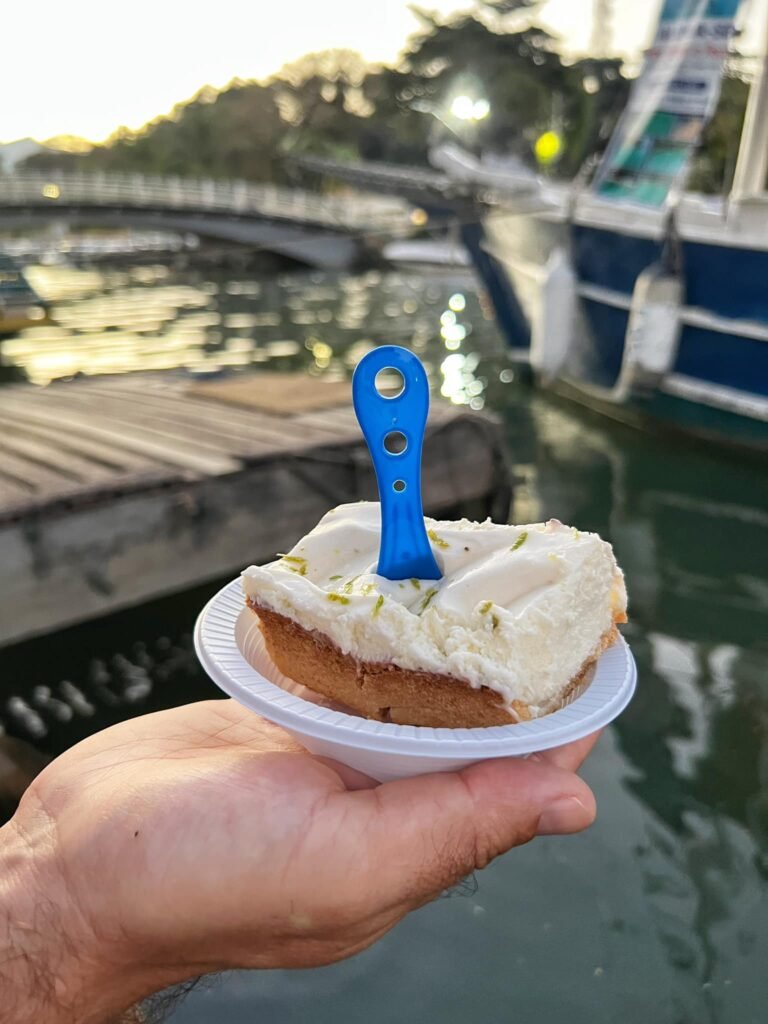
When we first saw a man selling homemade desserts on a cart on Ilha Grande, we thought he was just a entrepreneur with a very gifted granny or mother. But it seems, once we got to Paraty, that these plentiful carts must be the art of MANY talented Betão Crockers.Our choice in Paraty was an exquisite lemon cheesecake, enjoyed on the canal for 10 Reais or $2.05 a piece.
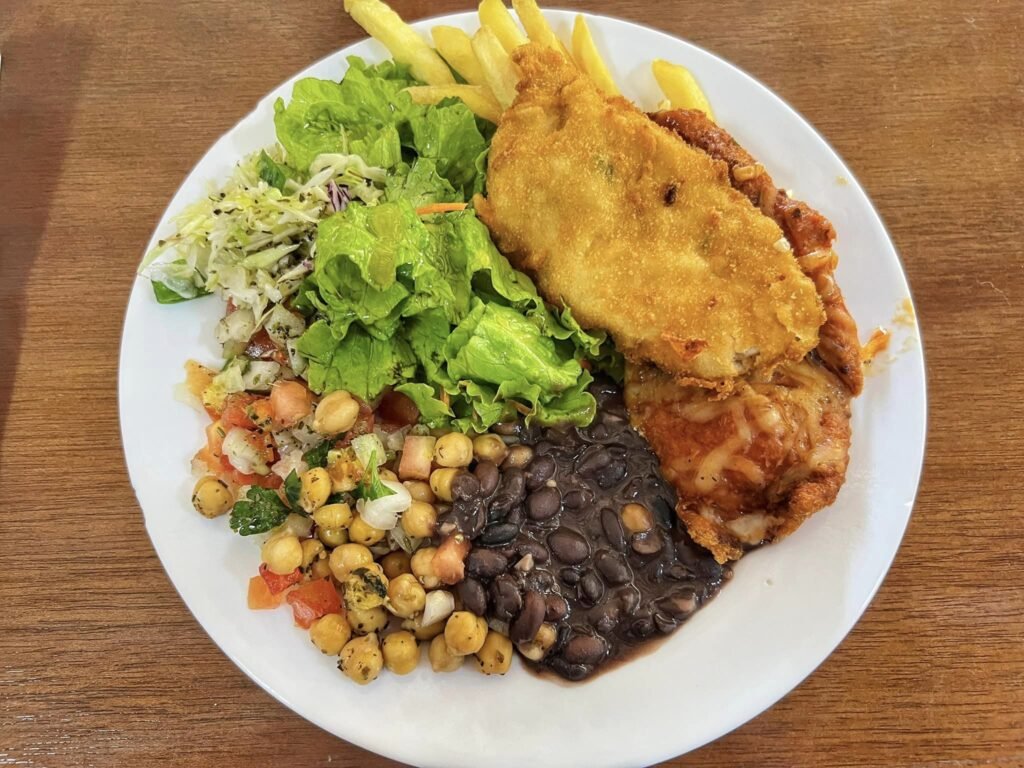
Our meals, when not cooked by ourselves, continued to come from the more economical self-service “quilo” lunches where you can load up your plate, buffet-style, and pay by the quilo. In Paraty, these plates were as low as $5.99/kilo or about $6.50 for this plate, but it kept us full for the rest of the day.


We had such success with the quilo lunches that we thought we’d try a self-service ice cream bar. It was fun for Mandy to relive her college gig of professional ice cream scooper and teach Greg the great art. (It’s all about the flick of the wrist.) Unfortunately, these self service ice cream bars seem to be a bit of a scam because we walked out paying far more ($7.75) for two ice cream cones than we’ve paid anywhere in Brazil. AND they made us do all the work! 😝😡 Still, it tasted pretty good.
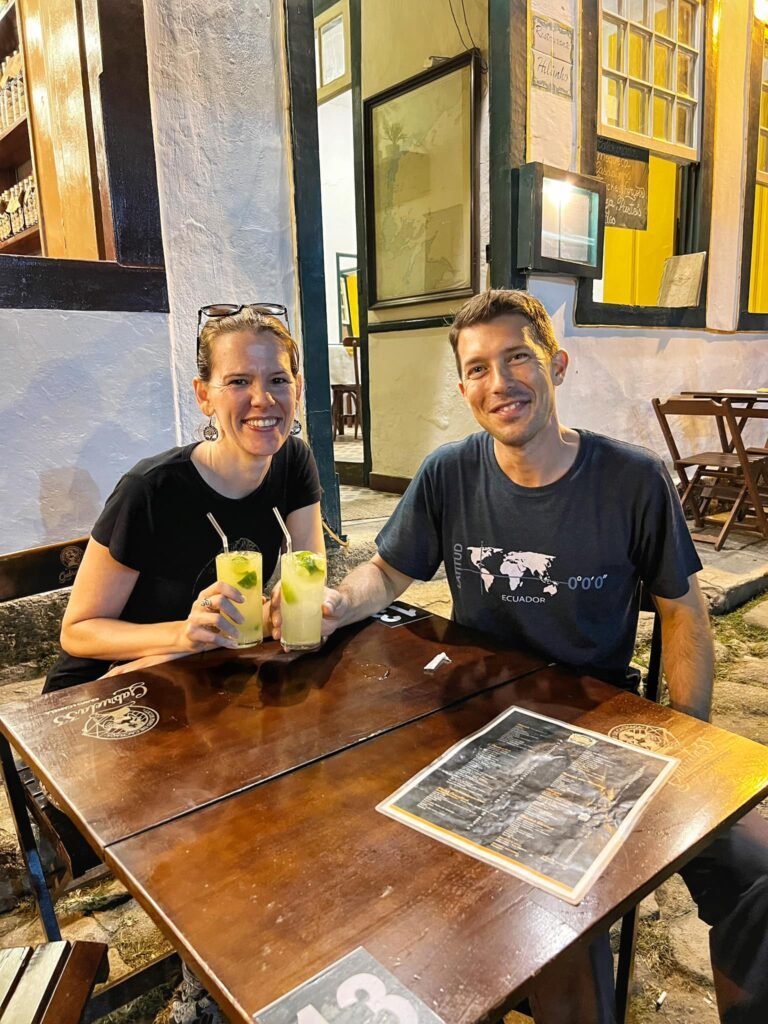
And of course we continued to enjoy the occasional caipirinha, Brazil’s national drink made of cachaça, lime, and sugar, which taste a bit like a mojito. These are typically a great value at about two for $4 or 20 Reais.
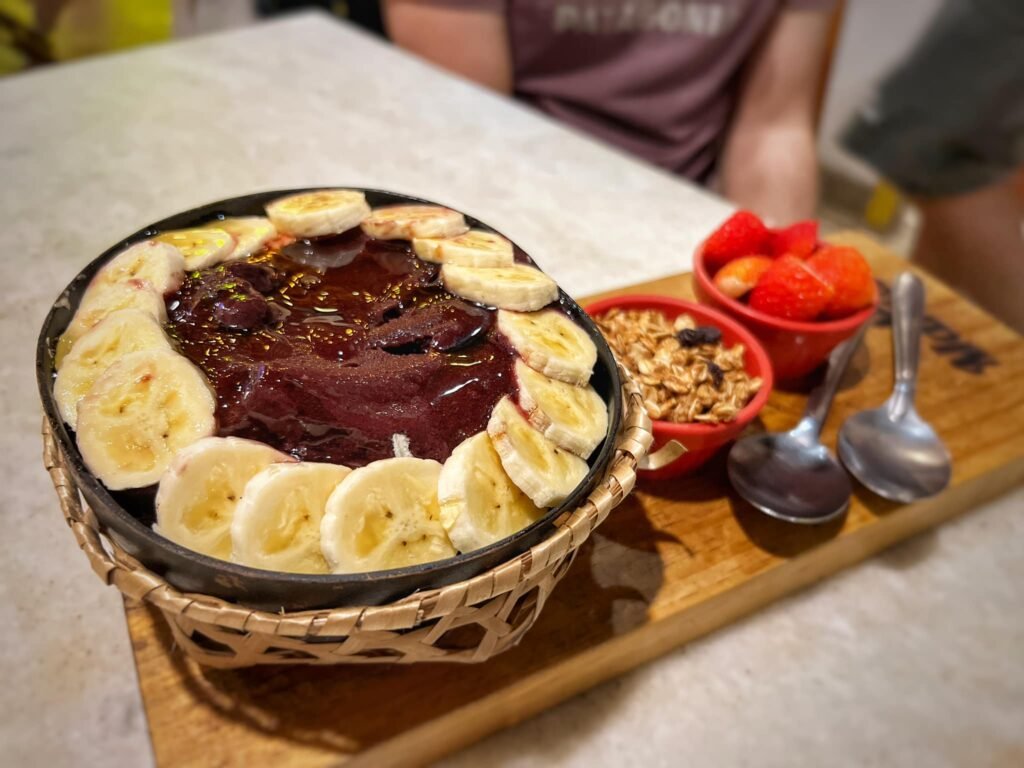
Most people around the developed world now know that açai is a powerful (and usually expensive) superfood thanks to marketing. But in Brazil, where it’s from, this little wonder is everywhere…for very affordable prices. Up til this point, we had mostly been eating it as a dessert, but finally figured out how to enjoy it the healthier way by the time we got to Paraty.
Açai na tigela, or “açai in the bowl” is a wholesome Brazilian dessert packed with antioxidants, vitamins, minerals and fiber. It is made with the frozen, then mashed fruit of the açai palm, which has berries that have an earthy or slightly raisin taste. Before blending the texture is granular but once blended, turns into deliciously tart whipped smoothie to dunk your spoon in. It is topped with guaraná syrup or honey and banana and you can add other fruits or granola as well. It is easily one of our favorite things about Brazil. (Cost 17 Reais or $3.50)

